Faith And Confidence, 1958
The artist, William C. Beall, captured a wholesome moment between a policeman patiently reasoning with a two-year-old boy trying to cross a street during a parade. It's the most-applauded picture ever to appear in the Washington Daily News.
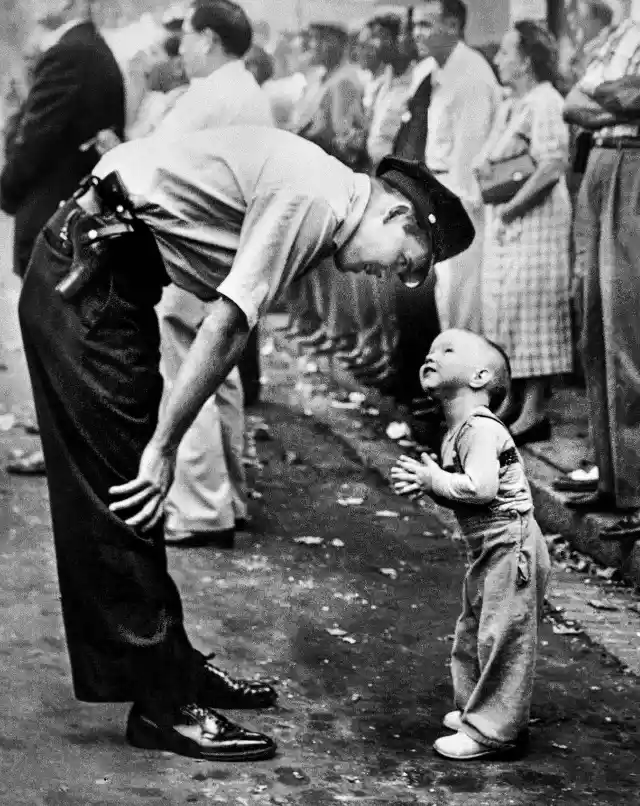
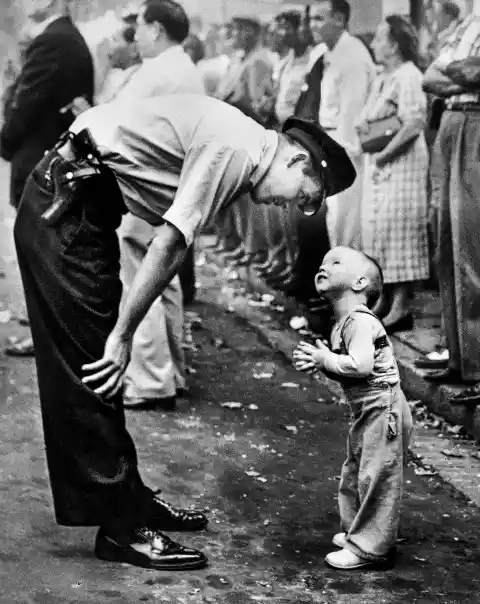
Beall started his career at a young age. He was sixteen when a photo agency hired him. Later on, he became the chief photographer for The Washington Post. This shows how important a little picture can be.
The Vulture And The Little Girl, 1994
Probably one of the most tragic pictures ever taken. Not just the photo itself but also the story behind it. Kevin Carter was a South African photojournalist who exposed the brutality of apartheid. What he witnessed marked his life forever.
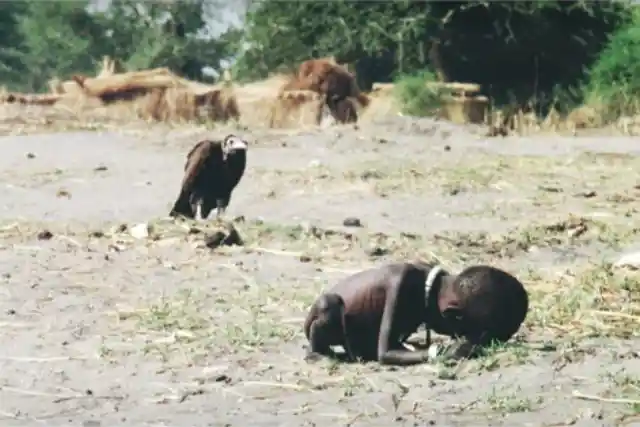
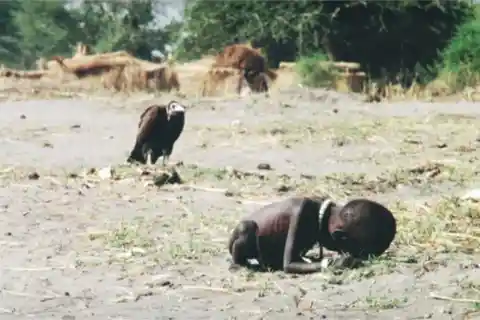
The picture shows a little girl, later revealed to be a boy, who had collapsed in the foreground with a hooded vulture eyeing him from nearby. The kid wanted to reach a United Nations feeding center about a half-mile away from where the picture was taken. Carter and the rest of the world were in deep horror, seeing what had been happening in Africa. Tragically, Carter could not live with the pain and committed suicide shortly after winning the Pulitzer.
The Kiss Of Life, 1968
Rocco Morabito was an American photographer who spent the majority of his career at the Jacksonville Journal. He won the 1968 Pulitzer Prize for Spot News Photography for “The Kiss of Life.”The photograph was published in newspapers around the world.
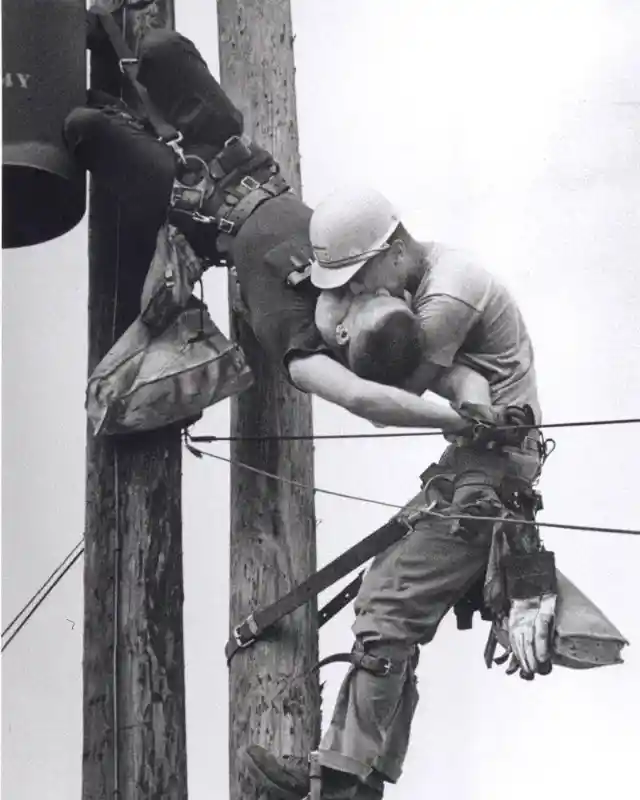
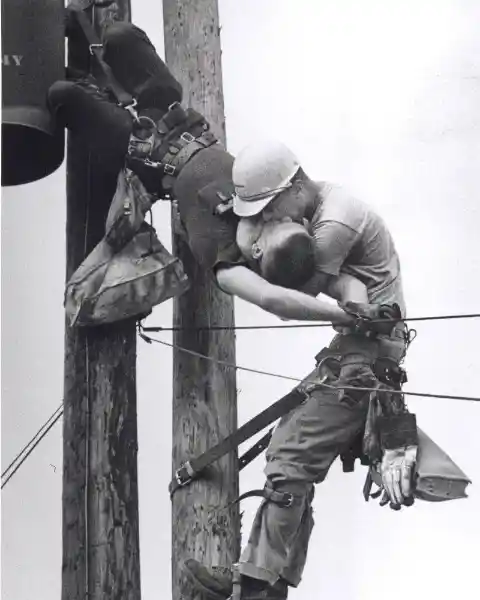
You might be wondering what the origin of this photograph is, well, let me tell you. Morabito was driving when he spotted an electrician hanging upside down on his safety belt struck by 4,160 volts of electricity. He called an ambulance immediately, and in the meantime, another lineman climbed up and rescued his colleague by performing mouth-to-mouth.
Coretta Scott King, 1969
After the tragic murder of Martin Luther King, the world was in shambles, and it seemed as if all hope was lost. Mr. King helped form a path of empathy and equality, and this award helps prove this point. Moneta J. Sleet Jr., the photographer, was the first African-American man to win the Pulitzer and the first African American to win the award for journalism.
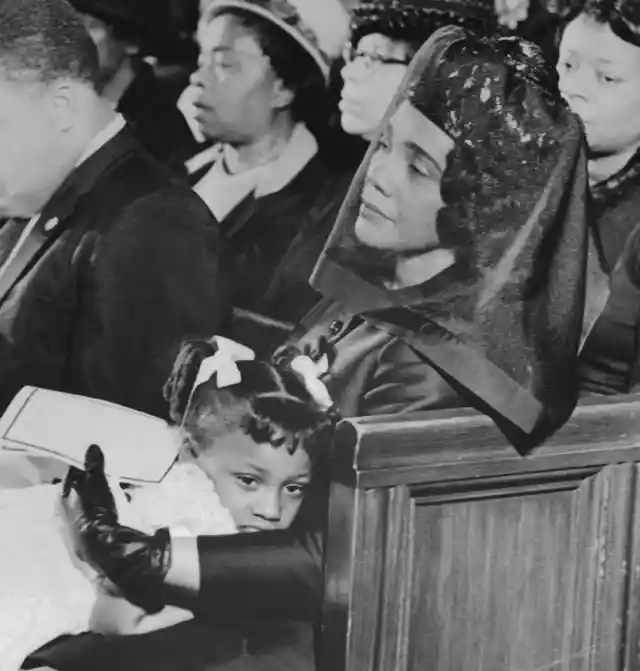

The picture shows a moment between mother and daughter, grieving the assassination of their husband and father. Luther King was more than an icon for many people; at the end of the day, he was a family man.
Flee to Safety, 1965
Japanese photographer Kyōichi Sawada wanted to capture the horrors of the Vietnam War during 1965, so he did. Not only that, but he also won the Pulitzer and got nominated for previous work he had done.
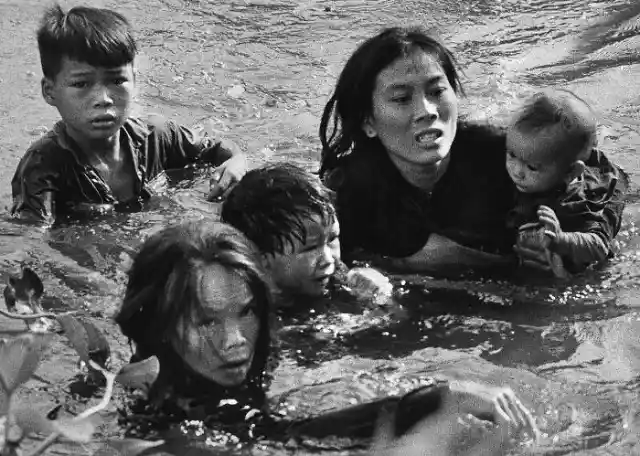
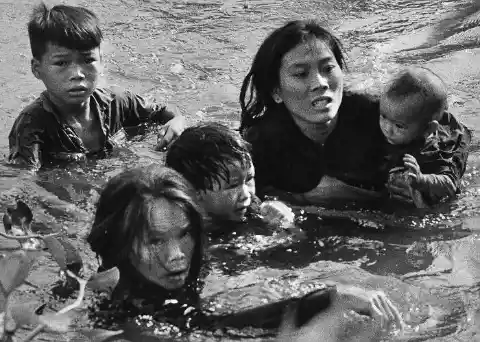
Flee to safety shows a Vietnamese mother and children wading across a river to escape a US bombing. In the end, they managed to escape, and Sawada got in contact with them after winning and gave them half of the prize money. Sadly, Sawada was assassinated while returning to Phnom Penh in 1970.
Andrea Doria Sinking 2, 1957
The dramatic sinking of luxury sea liner Andrea Doria was captured from a small plane by Harry Trask, who was suffering from airsickness. He was able to take many shots, but this is the one that got the price and glory.
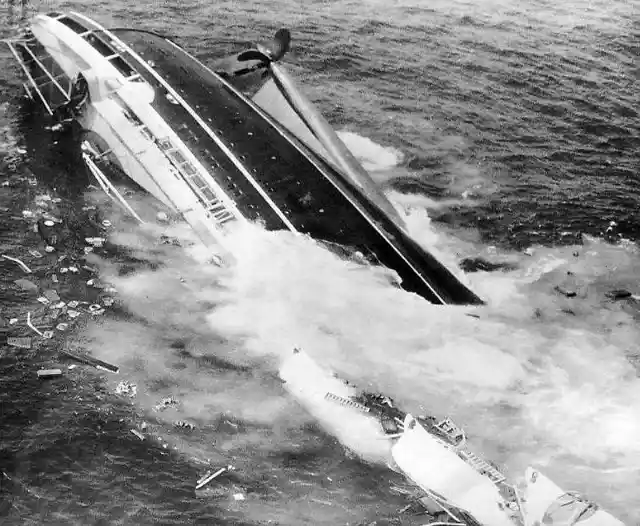
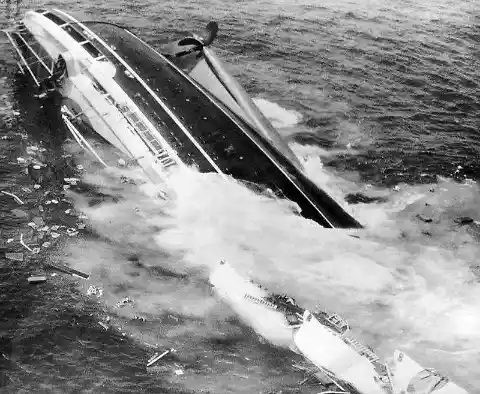
The picture was taken nine minutes before the ship sank. SS Andrea Doria, home-ported in Italy, lost 46 lives due to the sinking. Originally, it had a total o 1706 members, including passengers and crew.
Ebola Epidemic In West Africa, 2015
Daniel Berehulak is an Australian photographer who traveled to more than 60 countries covering contemporary issues. One of them was the Ebola epidemic in West Africa, for which he won one of his Pulitzer prizes.
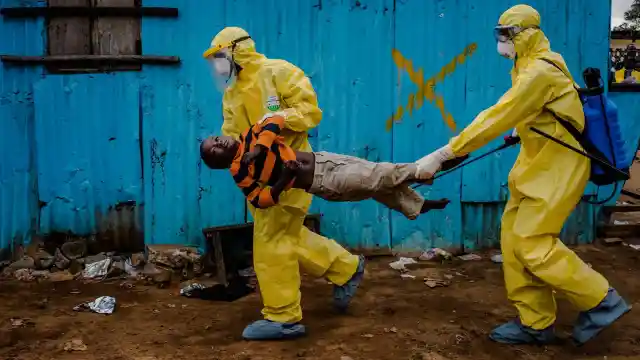
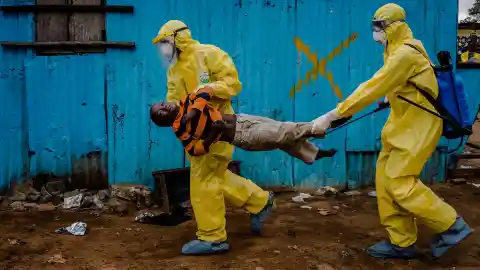
The complete selection of these photos is impactful to see, but this one spoke to me. Eight-year-old James Dorbor, suspected of being infected with Ebola, was carried by medical staff to an Ebola treatment center in Monrovia, Liberia. As suspected, James had the Ebola virus and died shortly after being committed.
Homecoming, 1944
Earle L. Bunker was a photographer for the Omaha World-Herald since 1929. In 1944, Bunker won the Pultizer for best photography for capturing this special moment between a daughter and his father.
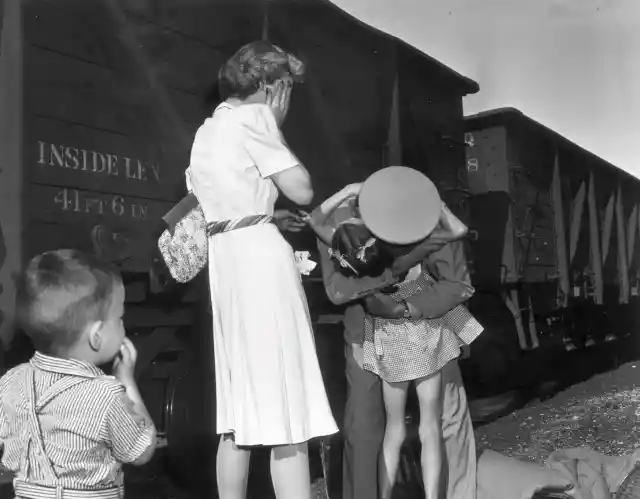
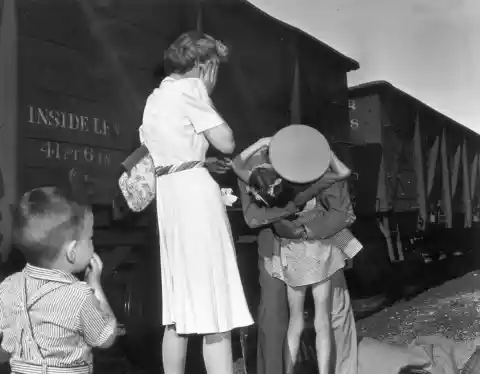
Lieutenant Colonel Robert Moore was coming back home after serving in WW2, after being away from his family for 16 months. Bunker waited twenty-four hours, next to the family, to capture the first hugs and tears.
Fatal Hollywood Drama, 1974
Anthony K. Roberts was an American actor and photographer. He received the 1974 Pulitzer Prize for Spot News Photography for a series of photos capturing a kidnap attempt.
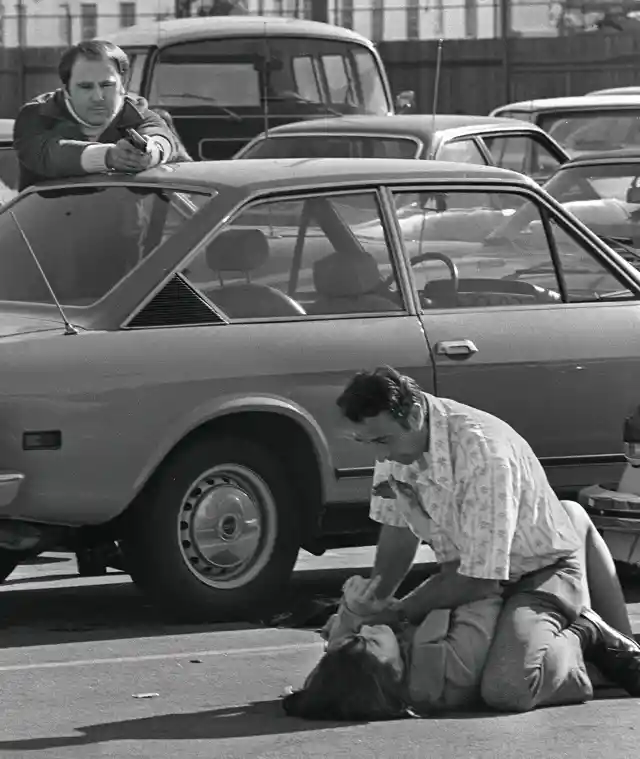

Roberts was walking through a parking lot in Los Angeles, California when he heard a woman screaming. He approached the scene and found Edward Fisher (39) beating Ellen Sheldon (22), who was lying on the ground. He started taking pictures when a security guard saw the altercation and intervened. The man threatened to cut the victim's throat, so the guard shot him.
Near Collision At Air Show, 1950
Oakland Tribune’s Bill Crouch was awarded the prize in 1950 for this picture. On his day off, Bill was attending an air show with more than 60,000 spectators who were stunned by a near-collision of a biplane and a huge B-29.

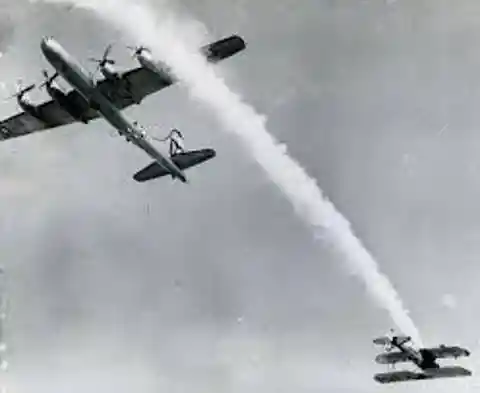
Three B-29 Superfortresses were supposed to fly through Derby's smoke trail, but the B-29s came a bit too early, and the biplane came within five feet of hitting the B-29's wing. Call it a close call.
Raising The Flag On Iwo Jima, 1945
This is one of the most iconic pictures in American history. Taken by Joe Rosenthal of the Associated Press on February 23, 1945, this is the only photograph awarded the Pulitzer Prize for Photography in the same year as its publication.
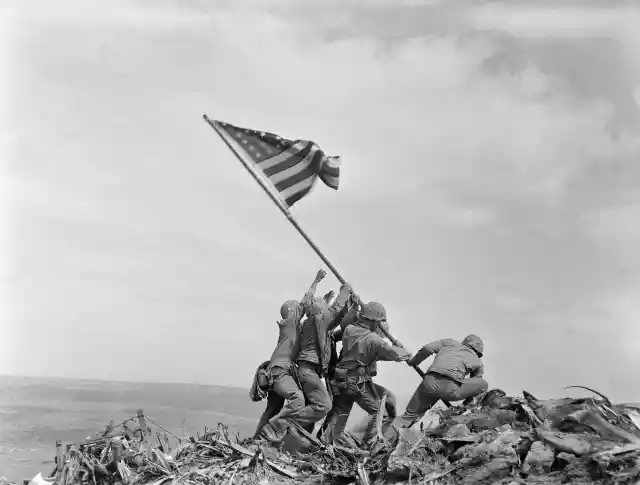

The photograph portrays six U.S. Marines raising the American flag atop Mount Suribachi during the Battle of Iwo Jima in the final stages of the Pacific War. Three of the six Marines in the photograph were killed in action during the battle.
Tragedy By The Sea, 1955
John L. Gaunt was an American photographer. On the morning of April 2, 1954, John Gaunt was lounging in the front yard of his beach house in Hermosa Beach when he heard a neighbor shout, “Something’s happening on the beach!” Instinctively, John grabbed his camera and rushed over to see a horrified couple clutching each other.
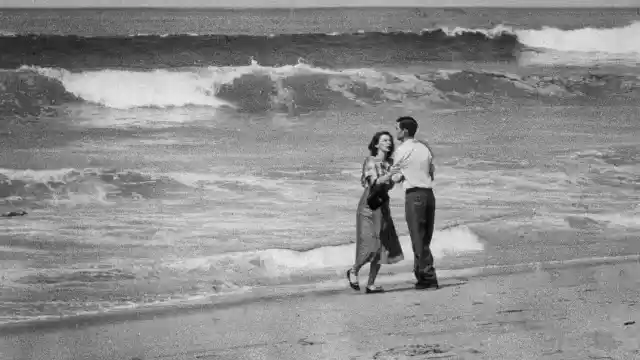
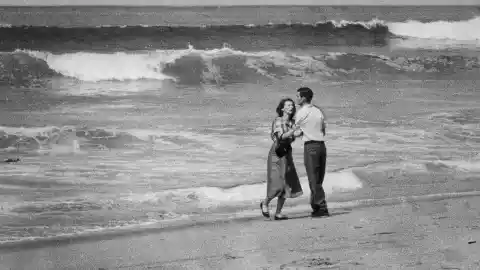
The young couple, Mr. and Mrs. John McDonald, was seemingly desperate so, Gaunt knew something was up. Their nineteenth-month-old son, Michael, had been playing along the shoreline and got lost in the ocean. The tragic moment was immortalized by the photographer.
Boy Gunman And Hostage, 1948
Frank Cushing was an American photographer who served in the U.S. Army Air Corps as an Aerial Photographer. His most renowned work is this picture in which a 15-year-old boy is holding another boy hostage in an alley.
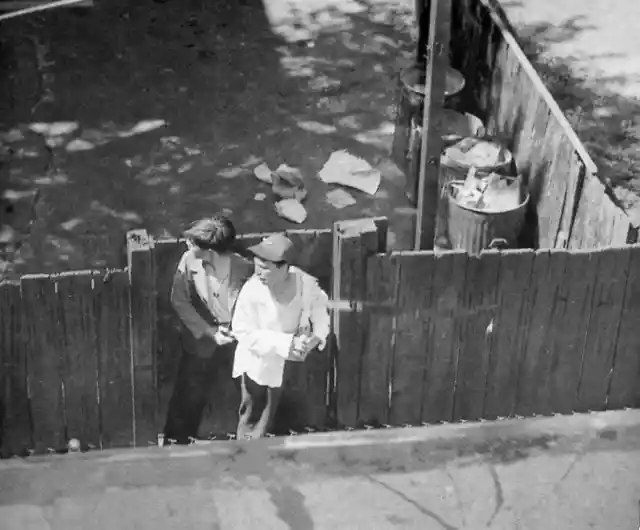
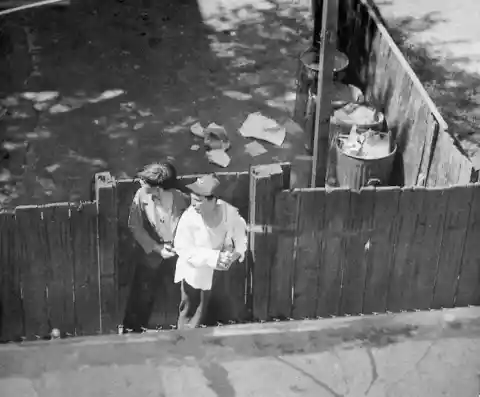
Cushing was sitting in his radio car outside a restaurant, waiting to capture victims of a holdup. An alert came from the radio of a police car parked alongside his vehicle. A shooting had taken place, an officer was injured, and a hostage was held. He went to the scene and photographed the event.
Migrants From South America, 2019
The Pulitzer awarded a staff of Reuters because of their work. The caption of the winner selection read: “For a vivid and startling visual narrative of the urgency, desperation, and sadness of migrants as they journeyed to the U.S. from Central and South America.”
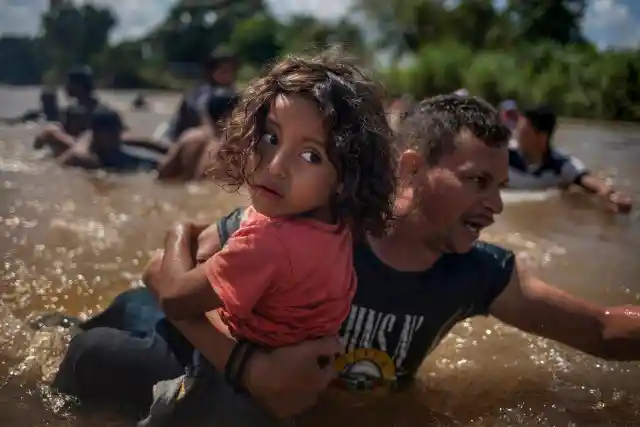
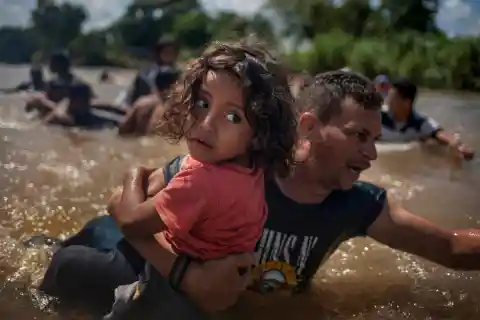
In this particular image, Luis Acosta helps carry 5-year-old Angel Jesus, both originally from Honduras, as a caravan of migrants from Central America en route to the United States. A second caravan of migrants bound for the U.S. border clashed with Mexican police at the border bridge. Dozens were injured, and one person was killed by a rubber bullet.
Tarawa Island, 1944
1944 was quite the year for the Pulitzer. But we couldn’t miss this distressing picture. Frank Xavier Filan won that year’s Pulitzer award thanks to the photograph he took of dead Japanese soldiers in the Battle of Tarawa.
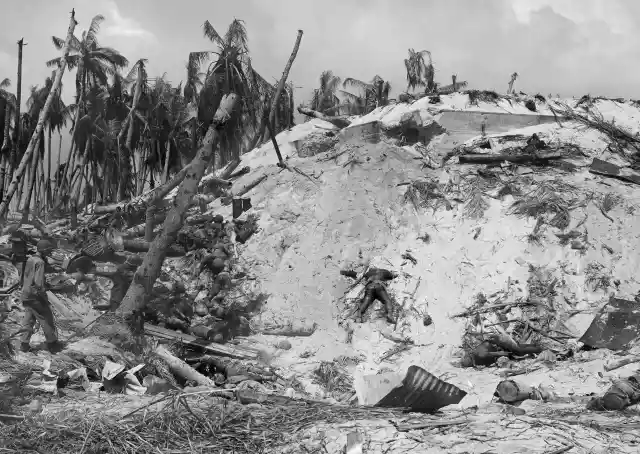
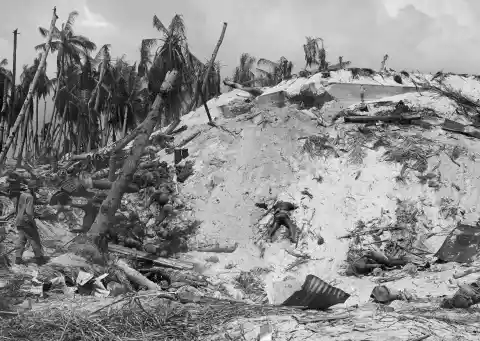
This battle took place in 1943 between the United States and Japan at the Tarawa Atoll in the Gilbert Islands. Nearly 6,400 Japanese, Koreans, and Americans died in combat. It was a bloody fight and a dangerous position for Filan. I guess that was part of the job.
Lull In The Battle, 1975
Gerald H. Gay was making an almost instinctive response to a radio scanner crackling fire, and by the time he arrived, all that was left was a semi burnt house. He didn’t see any of the firefighters at the scene, but when he looked around, he saw quite the image.

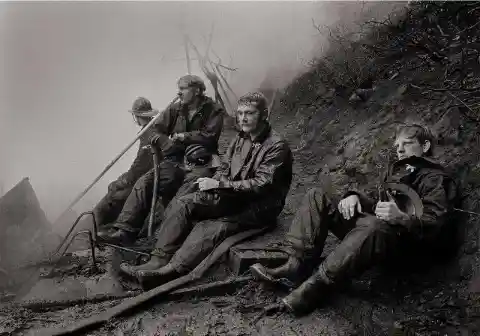
He found four exhausted firefighters slumped against a muddy bank. "I took six or eight frames, all at once," Gay recalled. "They all had a deep, reflective look. I could tell they were rethinking what they'd just been through." That portrait put his name on the papers, and he won the Pulitzer Award.
Survivors Of Rwanda And Burundi,1998
Capturing the exile awarded Martha Rial the 1998 Pulitzer Award. The photographer traveled to Tanzania twenty-three years ago to document the refugee crises faced by the people of Rwanda and Burundi.
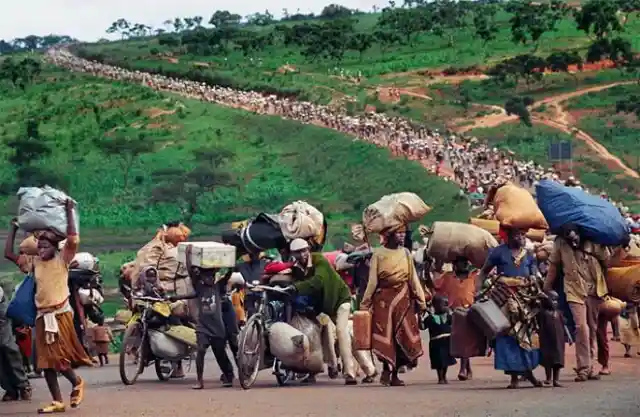
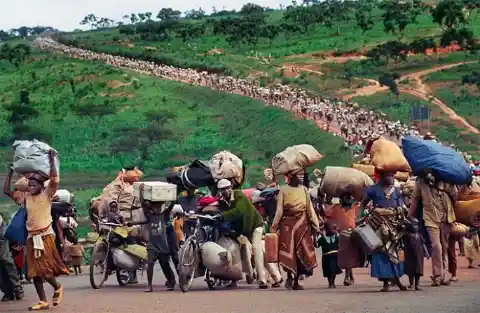
Capturing the exile awarded Martha Rial the 1998 Pulitzer Award. The photographer traveled to Tanzania twenty-three years ago to document the refugee crises faced by the people of Rwanda and Burundi.
Aid From The Padre, 1963
Hector Rondon Lovera managed to capture an exceptional moment, drama and tragicness exude from this picture. Luis Padilla, the priest, gives last rites to a soldier wounded by sniper fire during a revolt in Venezuela. Padilla found enough bravery to avoid the snipers and help the soldier.
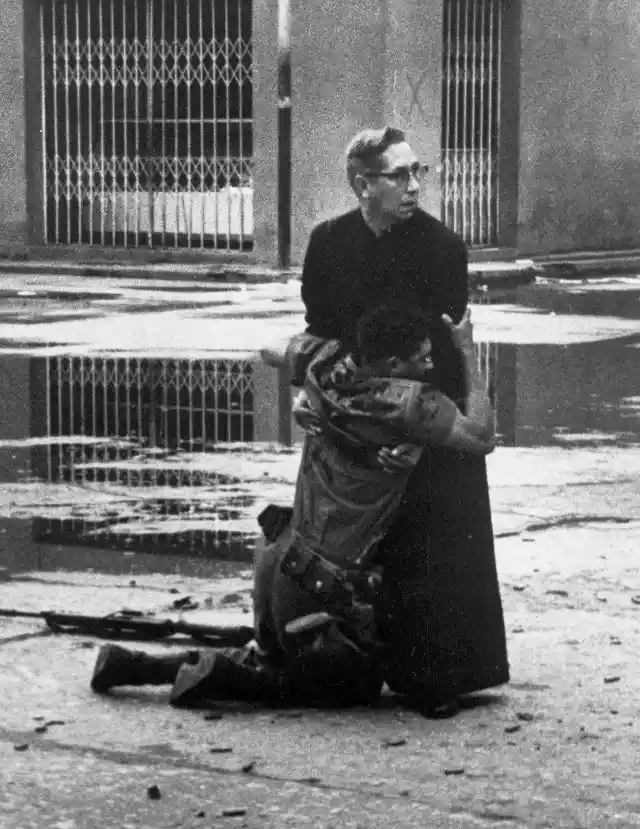
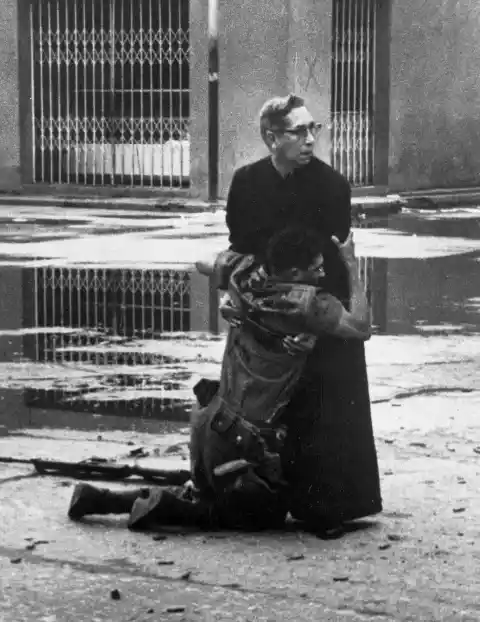
The photographer Hector Rondón Lovera, who had to lie flat to avoid getting shot, later said:“I found myself in solid lead for forty-five minutes … I was flattened against the wall while bullets were flying when the priest appeared. The truth is, I don’t know how I took those pictures, lying on the ground.”
Olympic Games, 1985
The winners were the Photography Staff of The Register from Santa Ana, CA, who were able to capture the most thrilling moment to those athletes who were giving their all. One of the pictures that captivated my eyes was a portrait of High Jumper Dwight Stones.
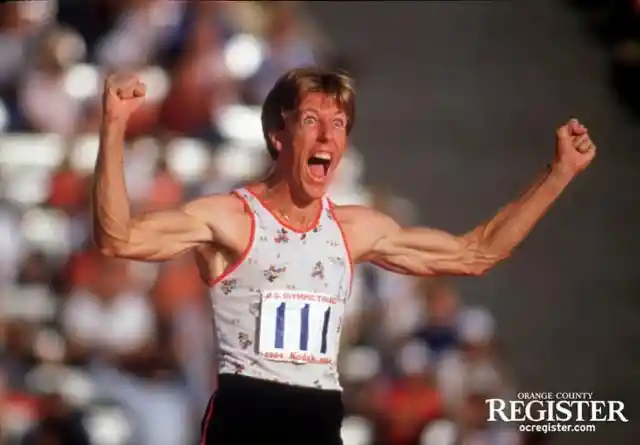

High jumper Dwight Stones was a long shot. Even though he was awarded two Olympic bronze medals and became a three-time world record holder in the men's high jump, he was 30 years old when the picture was taken. Very few people expected him to make the Olympic team, but he has proved them wrong.
Remember Me, 2008
Hear me out. I know most of these prizes are somewhat depressive for one reason or another but, that’s just life. Preston Gannaway won the Pulitzer due to the intimate chronicle of a family coping with a parent's terminal illness. Carolynne St. Pierre battled with a rare form of liver cancer, and through the course of her last years, her life was captured through the lenses.
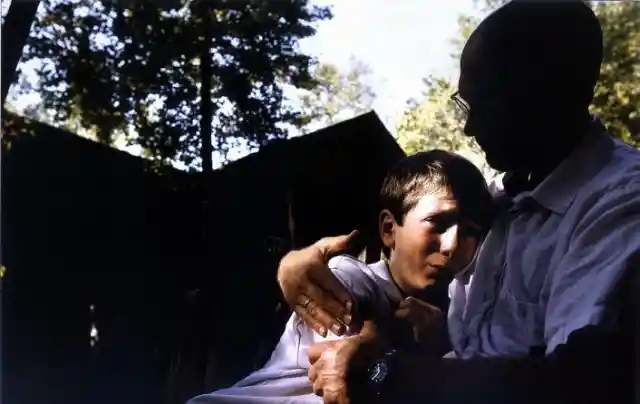
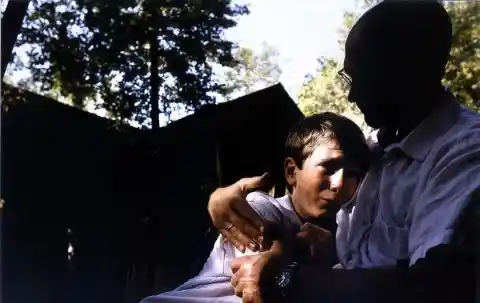
The photograph told us the exact moment when Brian, the son, cried while saying goodbye to Rich, the father, as he went to a therapeutic boarding school. Brian told Rich he didn't want him to leave. Rich tried to assure him that the experience would make him stronger and help him deal with grief.
Rescue on Pit River Bridge, 1954
Virginia Margaret was the first woman to win the Pulitzer Prize for Photography. The award-winning photograph was taken in Redding, California, at the Pit River Bridge, providing the picture’s title. The photograph was taken with a Kodak Brownie camera that Virginia had brought with her for a day of fishing with the family.
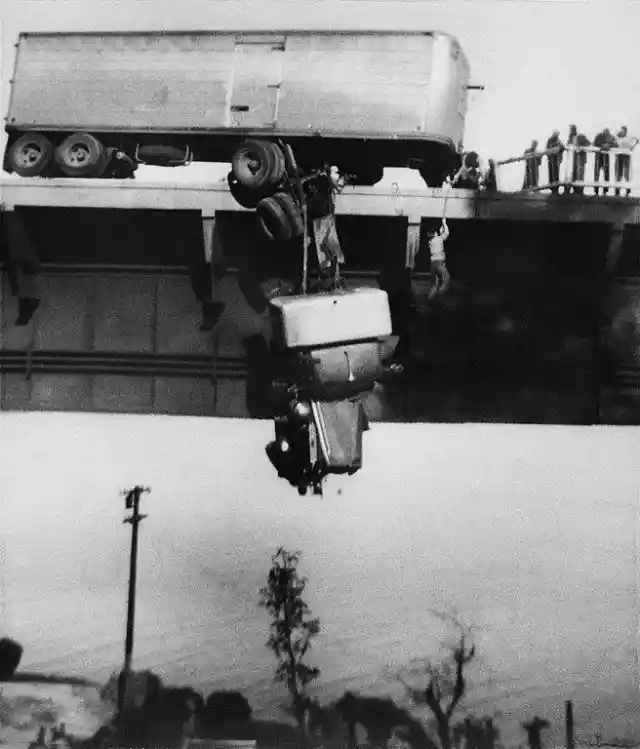
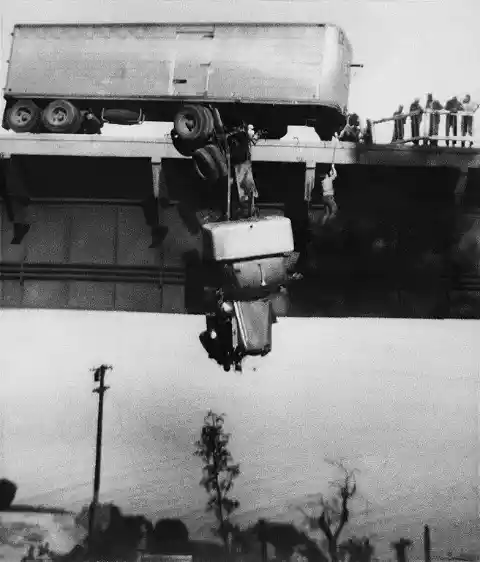
On May 3, 1953, her family was driving behind a semitrailer from Portland carrying fruits and vegetables. As the truck started over the bridge, the steering failed. Overby —the driver— lost control of the truck, which smashed through the bridge's steel railing. Overby and Baum, his companion, were trapped inside hanging off the bridge, 40 feet above the Sacramento River. Walter Schau, and the driver behind him, found a length of rope and, with the help of other motorists, attempted to rescue Overby and Baum from the dangling cab.
Ford Strikers Riot, 1942
The picture was taken during the 1941 workers' strike at a Ford manufacturing plant. It shows strikers beating a strikebreaker trying to protect himself by pulling his coat over his head and face. This picture was the first Pulitzer Prize for photography, and it was taken by Milton Brooks.
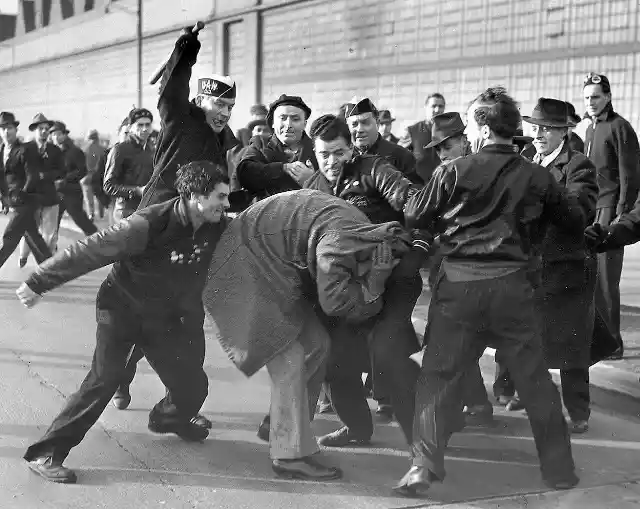
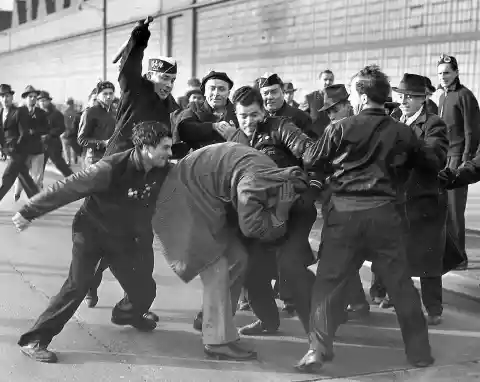
Describing the circumstances surrounding the historical photo, Brooks had something to say, "I took the picture quickly, hid the camera under my coat and ducked into the crowd. A lot of people would have liked to wreck that picture." I mean, he really started something after capturing such a moment in time.
Flight Of Refugees Across Wrecked Bridge In Korea, 1951
Max Desfor was on photographer’s duty traveling with the American frontline troops during the Korean war. He painted the picture of Pyongyang residents and refugees crawling over a destroyed bridge across the Taedong River to escape the advancing Chinese Communist troops.
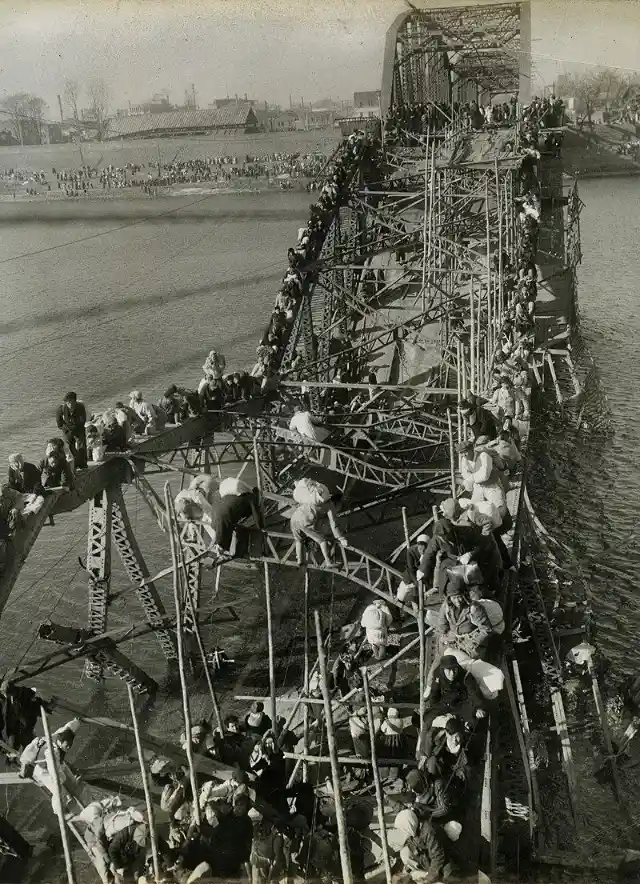
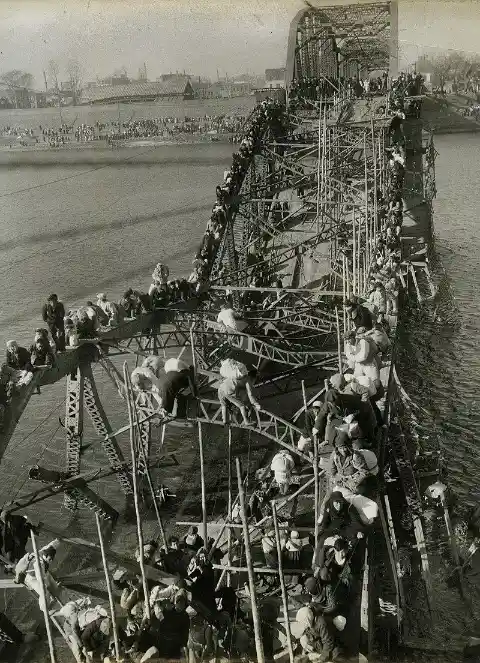
"All of these people who are literally crawling through these broken-down girders of the bridge," he said, "they were in and out of it, on top, underneath, and just barely escaping the freezing water." It must have been horrific to witness such a tragic event.
Last Rites Of Jose Rodriguez, 1960
Jose Rodriguez, also known as Pepe Caliente, was a former corporal in the army of Fulgencio Batista. In this picture, he was receiving the last rites from Father Domingo Lorenzo at San Severino Castle in Matanzas, who faced execution by firing squad after being convicted of the murder of two rebel members of Fidel Castro's 26th of July Movement.
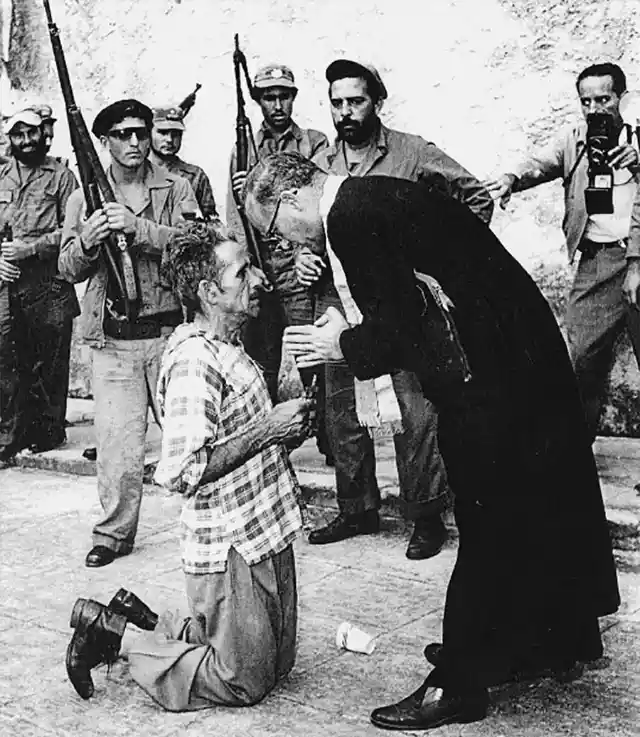
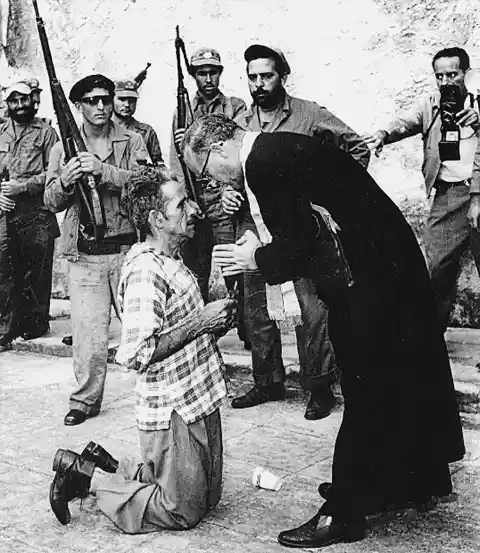
Some historical facts about Batista, he was the elected president of Cuba from 1940 to 1944. However, in 1952, he took over with a dictatorship. He was known for negotiating lucrative relationships with both the American Mafia —who controlled the drugs— and the large U.S.-based multinational companies that were awarded lucrative contracts.
Chicago Survivor, 2017
Tavon Tanner was ten years old and was sitting on his West Side porch gazing at the moon, when a shooter sprayed the house with bullets. Sadly, he wasn't the only victim. That day, several cops reported dozens of calls about shootings in the area.

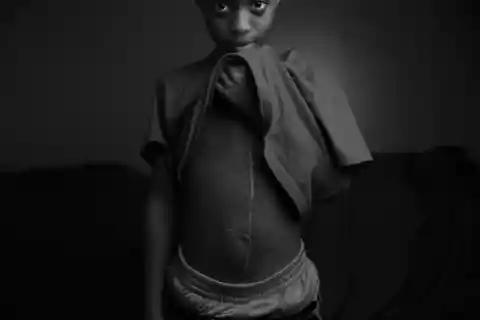
Jason Wambsgans, the photographer, managed to capture a series of images that show us way more than the physical damage. These photos reveal how survivors are affected after the event. Not only that, but they raise awareness of the gun issue in Chicago.
A Turbulent Rescue, 2010
Mary Chind witnessed a wild rescue. She saw a woman, later identified as Patricia Ralph-Neely (67), whose boat has been capsized and was fighting for her life.
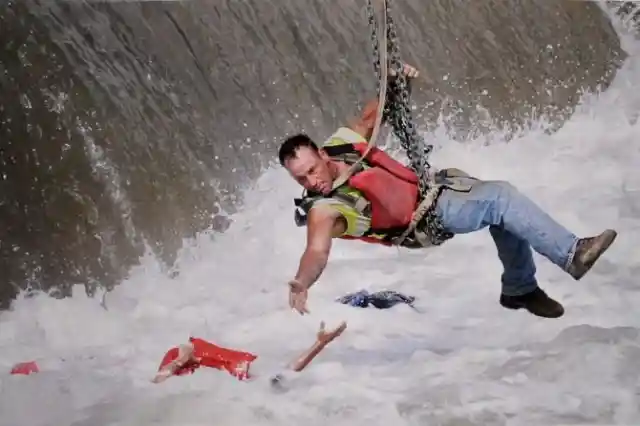
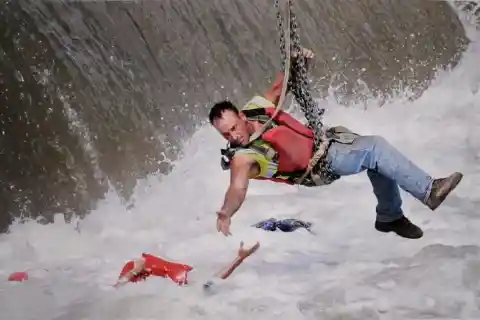
Jason Oglesbee, a construction worker, rigged himself to a crane and lowered himself to the water, in an attempt to reach out to Patricia. Like many of those trying to help, Jason struggled to save Patricia since the water was too agitated. Luckily, he finally was able to pluck her to safety, and both of them survived.
Water! 1943
Frank Noel is the photographer who received the second-ever award in this category, and it was thanks to a picture he took while being lost at sea. During World War II, Noel worked for the AP in the Pacific Theater. Trying to escape the Japanese invasion, malaria-stricken Noel paid for a passage on a British freighter bound for Rangoon, but the freighter was sunk by a Japanese torpedo.
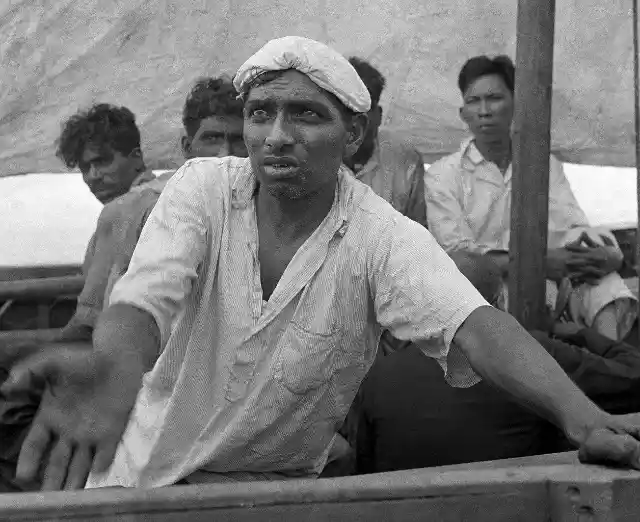

Noel was adrift in the Indian Ocean for three days when his lifeboat encountered another one. An Indian sailor on the other lifeboat requested water, but they had none as Noel's lifeboat was out of the water as well. Noel took a picture of the sailor, which was published after his lifeboat was rescued two days later.
PTSD, 2012
The series of very personal and traumatic pictures of Brian Scott Ostrom won the second Pulitzer award for Craig F. Walker. I cannot recommend you enough to see the whole series; to take a peek at what his time in Iraq caused to his mental health. Every picture tells a little bit of his day-to-day struggle, but this sums it up.

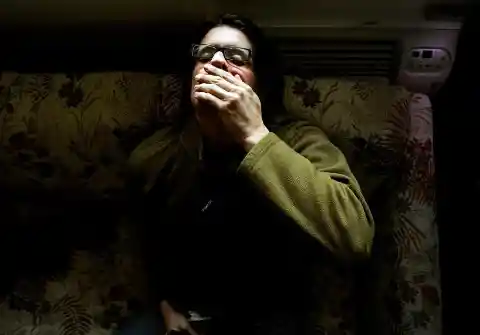
Brian pressed his hand over his mouth as he tried to calm a panic attack at his apartment. Scott said it's been hard to find meaning in his life since 2007 when he was honorably discharged from the U.S. Marine Corps. He tried to commit suicide many times, luckily he did not succeed and sought help.
Columbine Shooting, 2000
Many might remember the event that occurred on April 20, 1999, at Columbine High School, If it doesn't ring a bell, let me remind you. The perpetrators, Eric Harris and Dylan Klebold, murdered 12 students and one teacher. Many more were injured, and for a long time, this was the deadliest high school shooting in U.S. history.
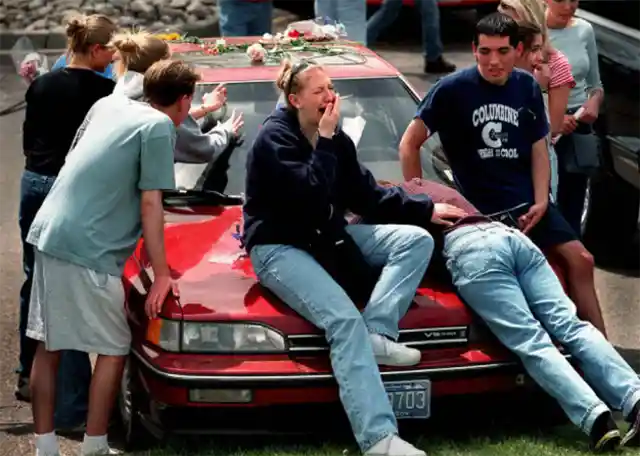
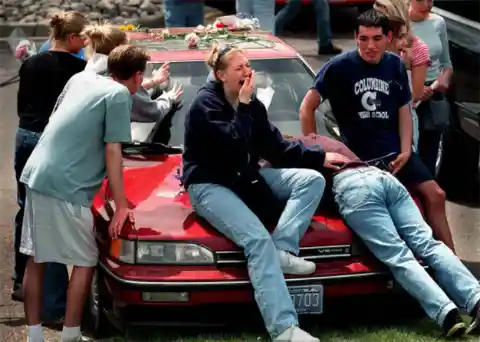
Broken with sorrow, Columbine students were in Clement Park grieving at the car belonging to Rachel Scott, who was seventeen years old when killed by the shooters. Mourners turned her car into a shrine and mourned together.
Gold Medal, 1993
Shall we end on a good one? Nothing brings more joy to a nation than a gold medal. In 1992, Ken Geiger and William Snyder covered the Olympics in Barcelona, Spain.
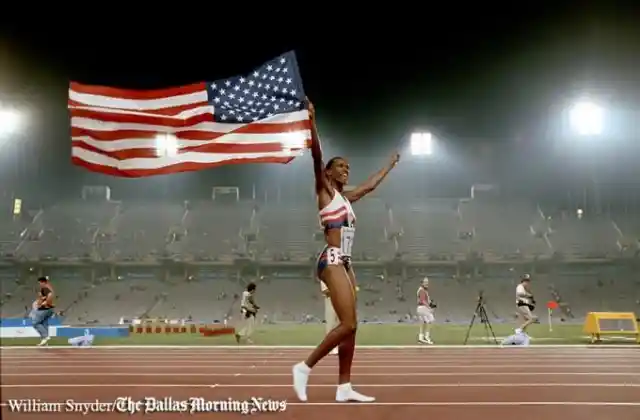
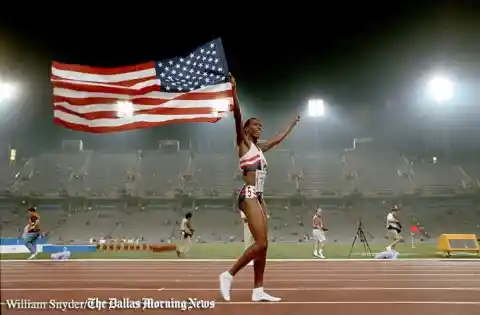
USA's Jackie Joyner Kersee walks Barcelona’s Olympic Stadium track on Sunday night after winning the gold medal in the Heptathlon competition during the XXV Summer Olympic Games. It must have been a beautiful day for many.
The Pandemic, 2021
Photographer Emilio Morenatti captured a series of poignant photographs that show the reality of the COVID-19 pandemic and how it affected the elderly population.
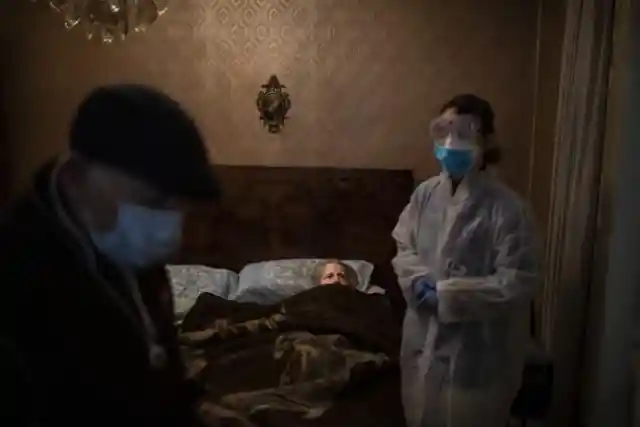
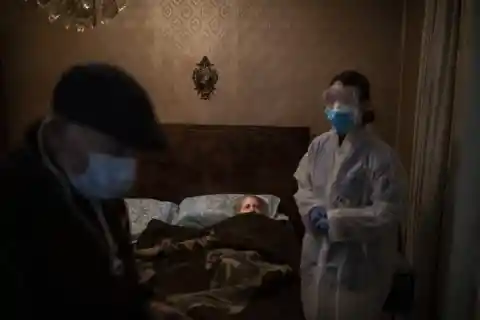
This picture was taken in Spain, where the virus outbreak was particularly deadly last year. Here, you can see a bedridden woman who can only see her husband from afar.
The Dancing President, 1997
Boris Yeltsin served as the first president of the Russian Federation from 1991 to 1999, after the fall of the Soviet Union. Here, we can see him dancing at a rock concert as part of his reelection campaign.

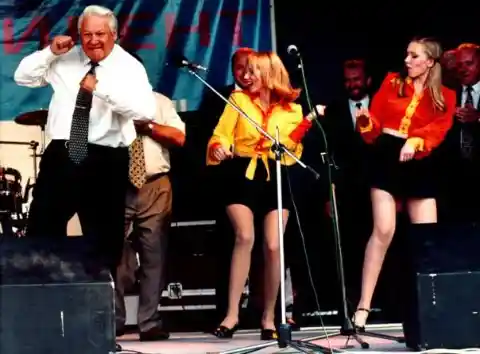
This fun side of the president did make him popular with people. However, due to massive internal pressure, he resigned in 1999 and was succeeded by Vladimir Putin.
Babe Ruth Bows Out, 1949
Babe Ruth is regarded by most people as the greatest Baseball player of all time. Seeing him play for the last time and say goodbye to the sport was an emotional moment for thousands of people.
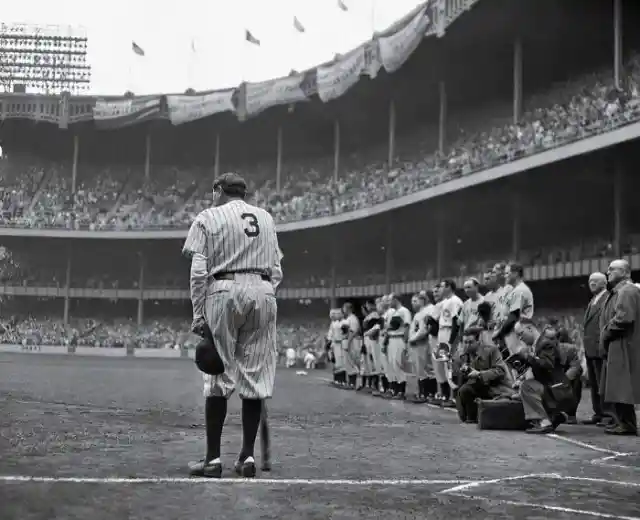
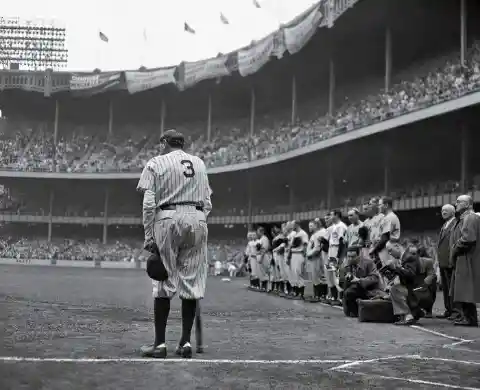
Here, we can see Ruth bowing out, using his bat as a cane and wearing his iconic number 3 shirt. The whole stadium cheered for him as he said goodbye. He was battling cancer at the time, and he passed away two months later.
The Taliban, 2002
This photo shows the face of a man looking straight into the camera, with a very deep look in his eyes. It's mesmerizing, to say the least.
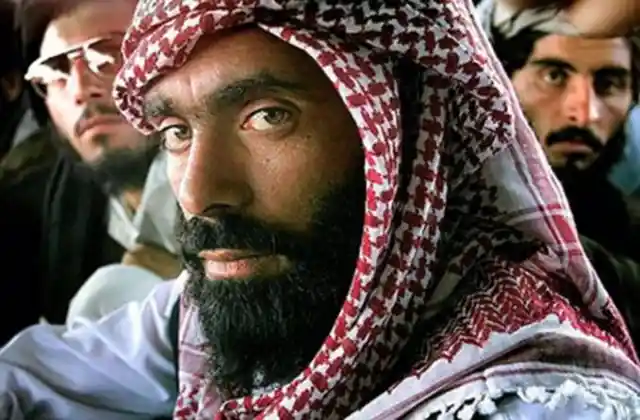
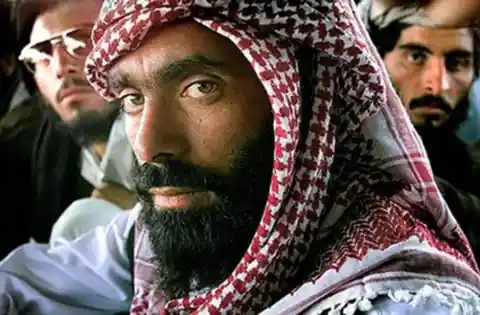
This man was a pro-Taliban supporter waiting to hear an Anti-American speech at a rally on October 2, 2001, in Quetta, Pakistan.
Adlai Stevenson, 1953
Photographer Bill Gallagher was known for taking comedic pictures. He took this photo of Democratic presidential candidate Adlai Stevenson in a very discrete way by kneeling on the floor. This way, he managed to capture the hole in the candidate's shoe.
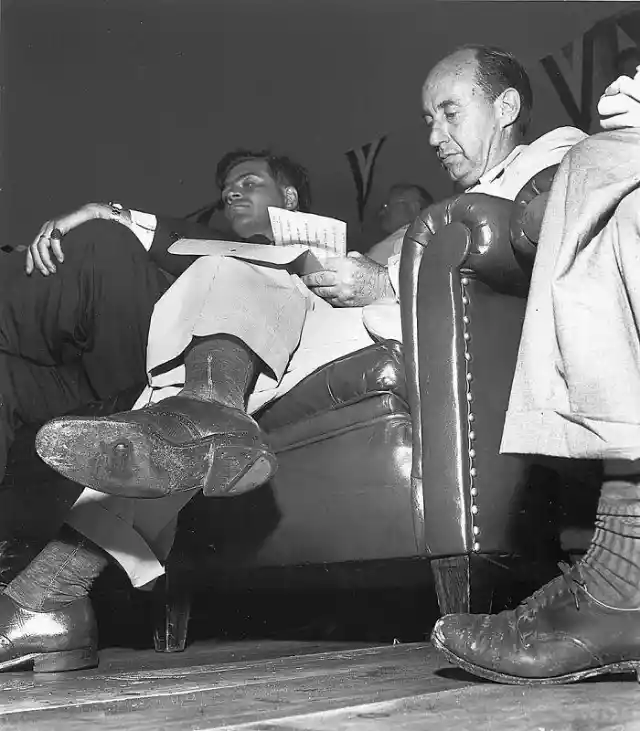
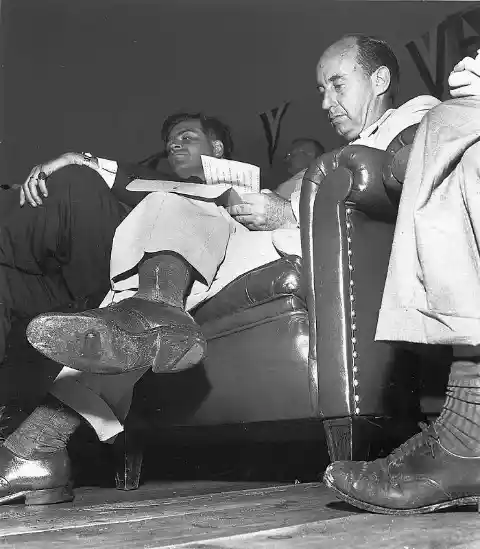
He always presented himself as a very wealthy, distinguished gentleman, so the fact that he had a hole in his shoe made waves. He was mocked by hundreds of people, who sent him new shoes as a prank.
Parents Addicted To Drugs, 1998
We all know that there are thousands of people out there struggling with addiction, but we often forget that many of them have little children under their care.

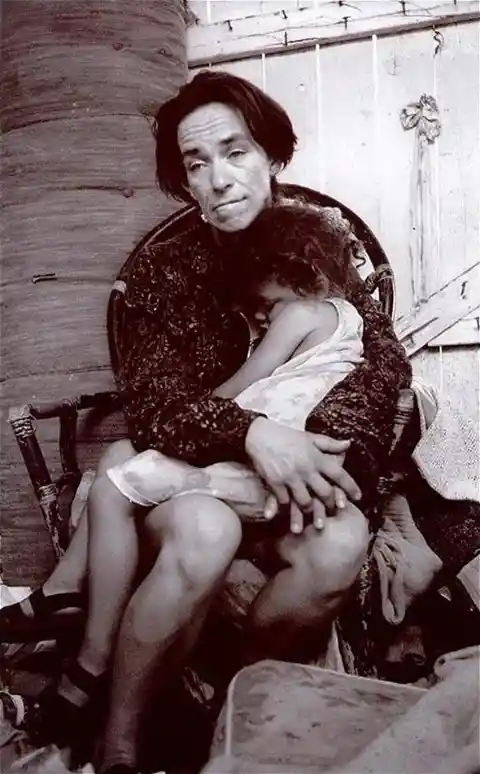
Photographer Clarence Williams shed light on this issue with a series of photographs that showed how addicts took care of their small children. Here, we can see a woman cradling her daughter after doing heroine.
Famine In Yemen, 2019
There has been an ongoing famine crisis in Yemen since 2016. Despite the efforts of many international organization, this problem has only gotten worse over the years, especially after the pandemic.
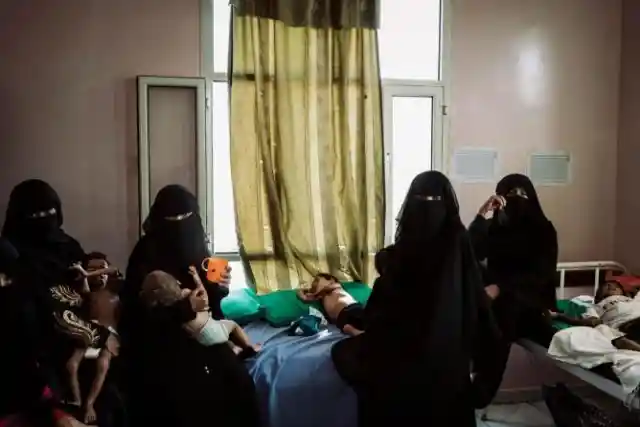
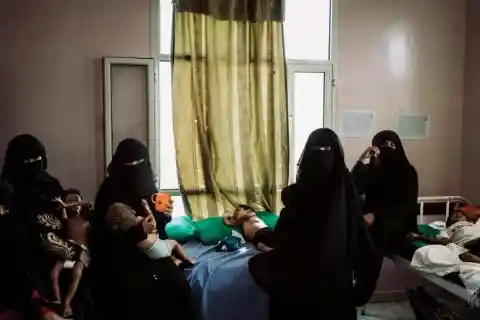
This photo shows an overcrowded hospital, where several mothers and their malnourished babies have to share beds. Some people even have to sleep on the floor.
Fire Escape Collapse, 1975
This award-winning photograph shows the chilling moment when a fire escape collapsed during a fire in Boston. Here, we can see 19-year-old Diana Bryant and her goddaughter, Tiare Jones.
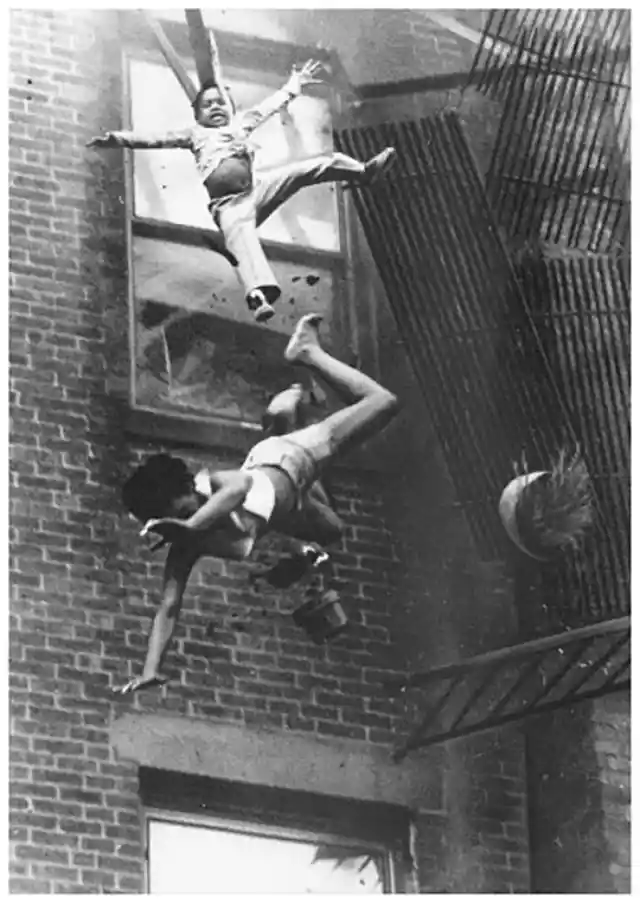
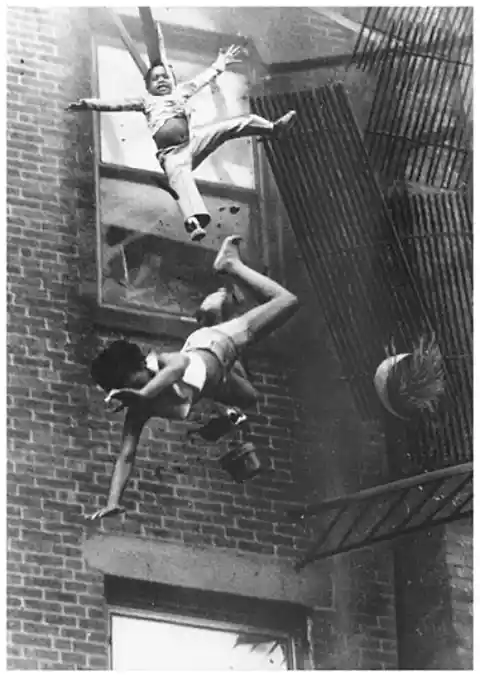
Bryant sadly died from her injuries hours later, but the toddler survived. This photo led to the adoption of new fire escape laws in the US in order to make them safer.
Ruby Shoots Oswald, 1964
Sometimes, the best photographs are taken unexpectedly. Photographer Robert Hill Jackson thought he'd only have to cover the transportation of Lee Harvey Oswald, convicted for the murder of John F. Kennedy, to jail. Sadly, that was not the case.
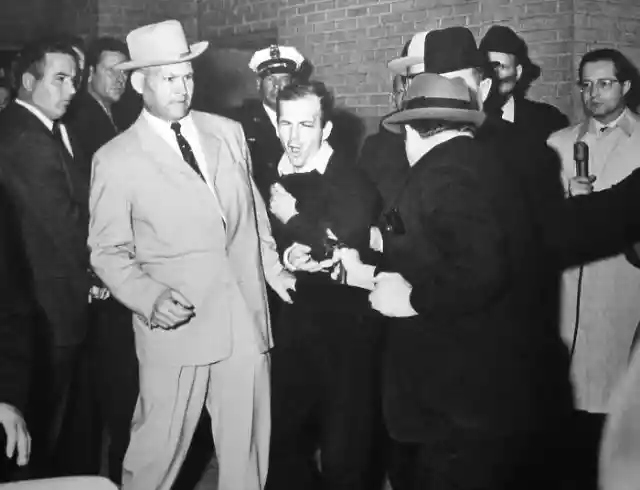
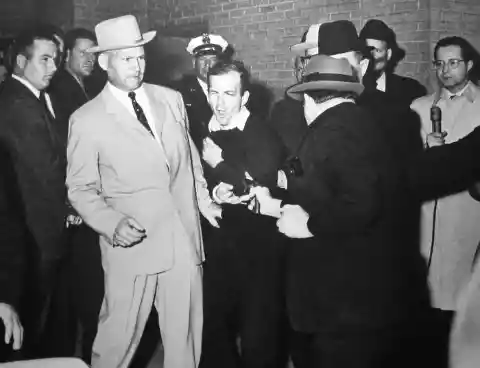
Just as the photographer started taking pictures, a man named Jack Ruby jumped in front of him and shot Oswald dead.
Burst Of Joy, 1974
This iconic picture shows what seems to be a happy family reunion. On the right, we see a woman and her four children, joyfully running towards the man on the left, the father.
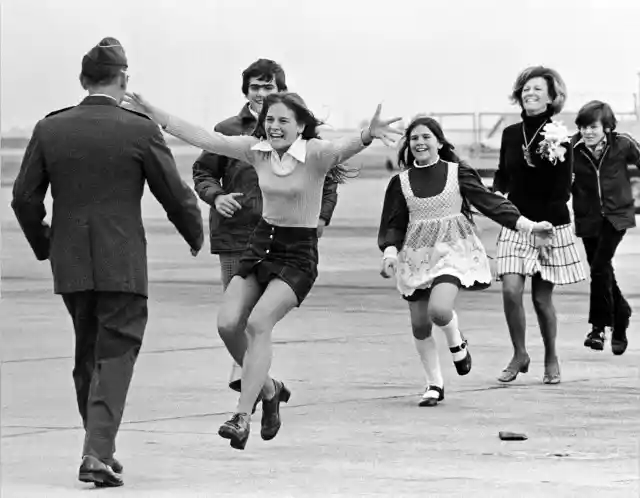
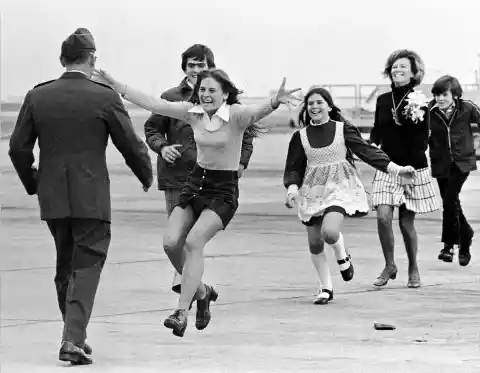
The man, Lt. Col. Robert L. Stirm, was meeting his family again after being imprisoned in Vietnam for five years. This photo marked the end of the Vietnam War.
Fleeing Myanmar, 2018
The Rohingya are an ethnic group that belong to the Muslim faith. For several years, they have been persecuted and murdered in Myanmar.
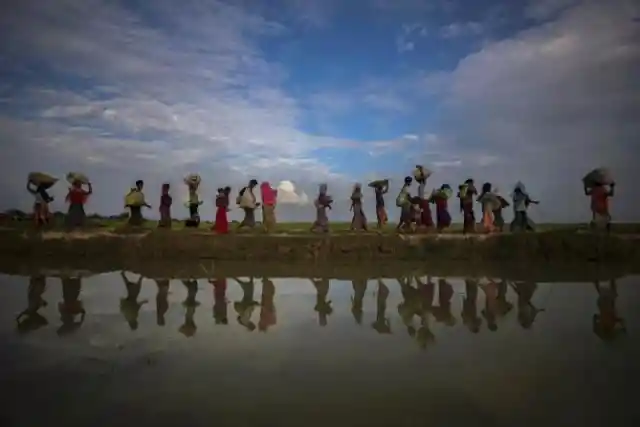
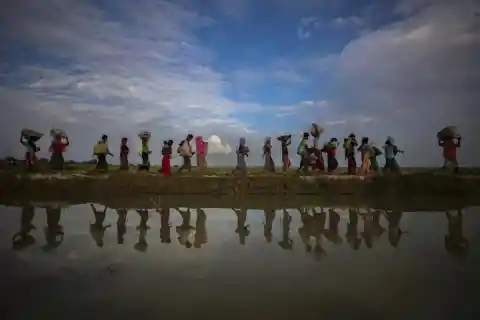
This photo shows a group of Rohingya fleeing their home country of Myanmar in search of a new home in Bangladesh. Sadly, only very few make it.
Tokyo Stabbing, 1961
During an election in Japan, things got very heated. They slowly escalated and culminated in a violent fight on stage in front of 3000 people.
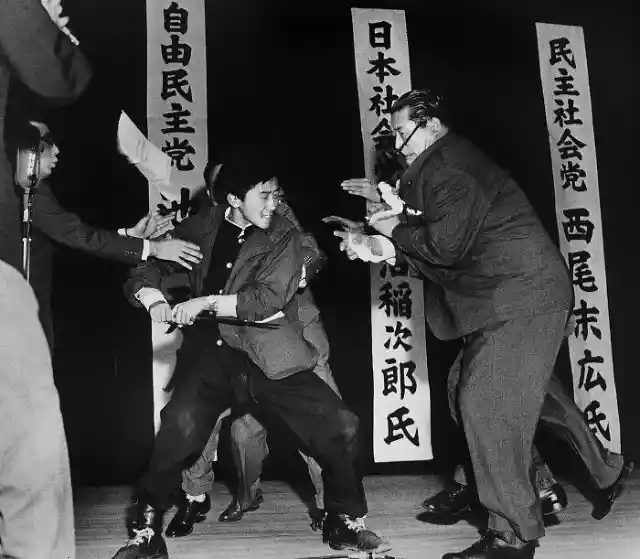
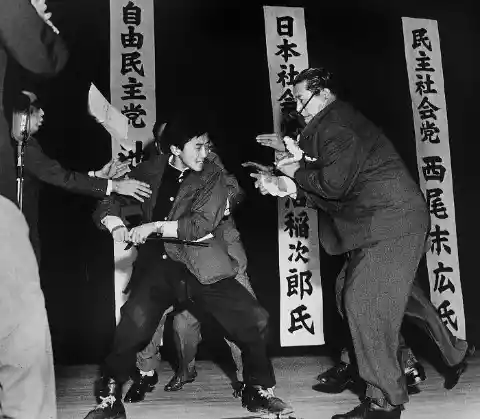
An angry student drew a footlong sword and attacked a helpless politician, stabbing him in the abdomen. This photo shows the exact moment after the student pulled out the blade from the politician's body.
Burn Survivor, 2001
Matt Rainey followed the journey of two students who suffered critical burns after a fire broke out in their dormitory at Seton Hall University.
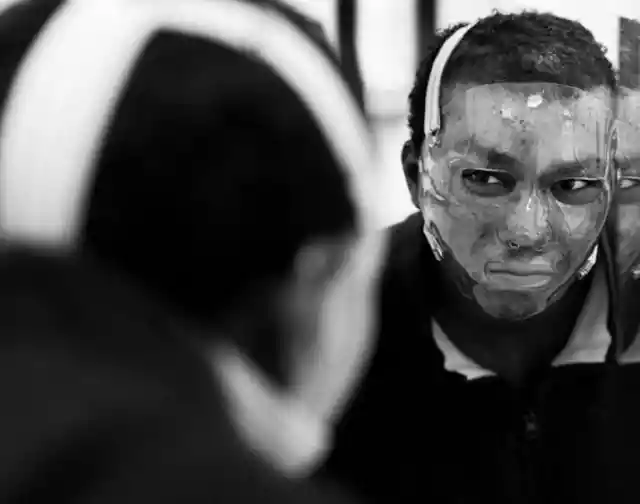
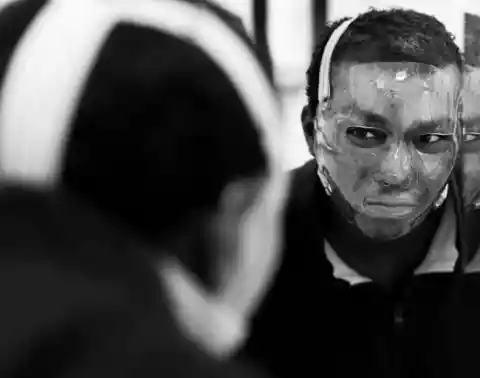
Here we see Shawn, one of the survivors, as he looks at himself wearing a mask designed to prevent scarring. He decided he did not like it, and chose to live with the scars instead of wearing the mask 12 hours a day.
Guerilla Areas In Rhodesia, 1978
Rhodesia was an unrecognized state in Southern Africa, which is now modern Zimbabwe. From 1965 to 1979, there was a bloody war in the territory.
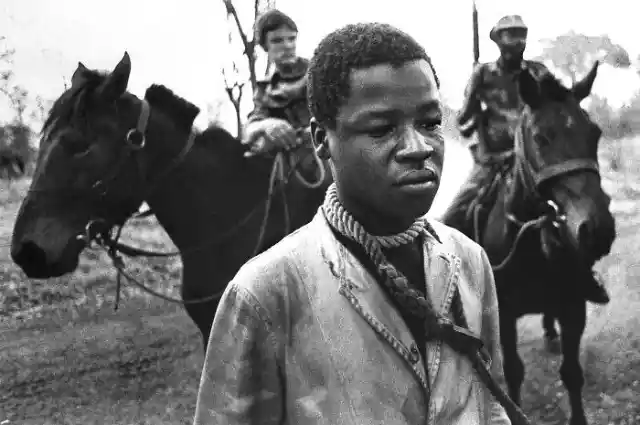
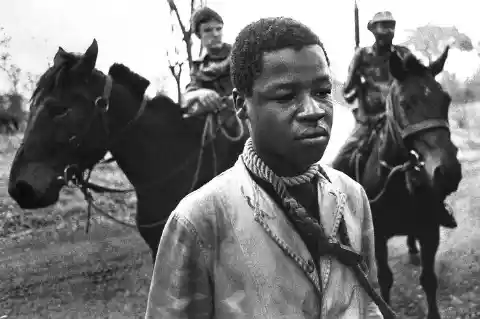
This photo shows the Rhodesian Security Forces as they are about to execute a prisoner, who has a rope around his neck.
Firing Squad In Iran, 1980
This jarring photograph shows a firing squad comprised of Islamic supporters of Ayatollah Khomeni shooting 11 Kurdish men in Iran.
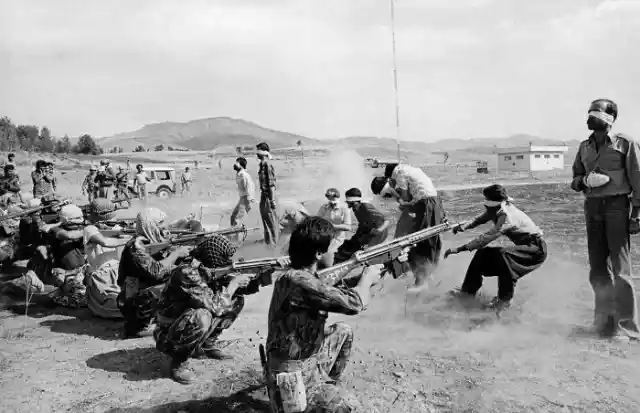
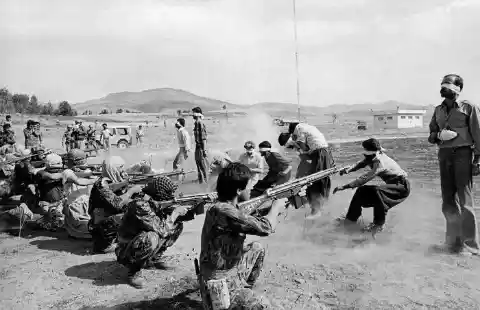
The identity of the photographer remained a mystery for decades, as being exposed could put him in great danger. Iranian authorities pushed for his name to be revealed, but they had no luck. In 2016, it was revealed (with his permission) that the photographer was named Jahangir Razmi.
Serious Steps, 1962
This picture does not seem special at all, until you learn who these men are. These are John F. Kennedy and Dwight D. Eisenhower, photographed as they were having a serious conversation about the future of the country.
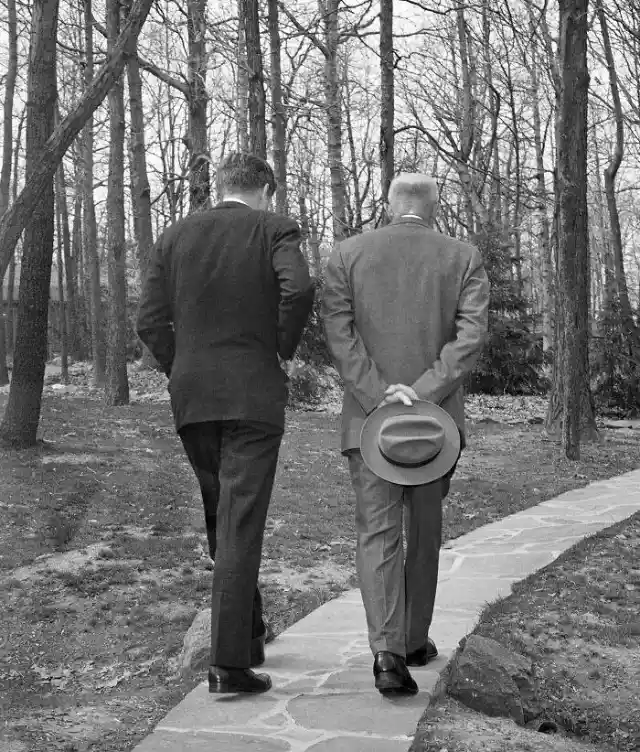
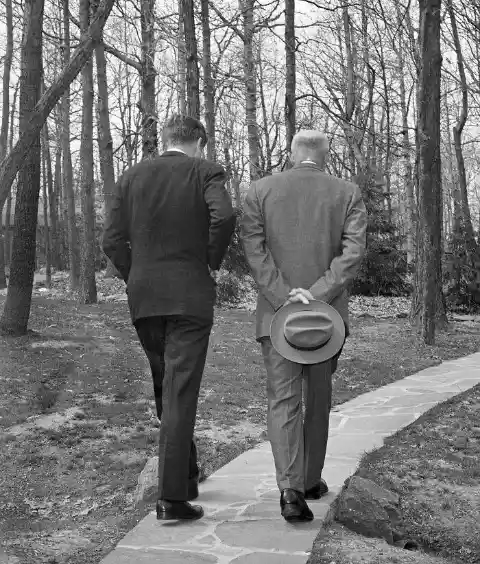
The photo was taken just after the press secretary told the photographer not to take any more pictures. The photographer continued regardless and captured the two men from behind.
Death Leap From Blazing Hotel, 1947
A fire broke out at the Winecoff Hotel in Atlanta, Georgia, on December 7, 1946. 119 people died, but many others managed to survive. An amateur photographer caught the moment when a woman jumped out of the hotel to escape the fire.
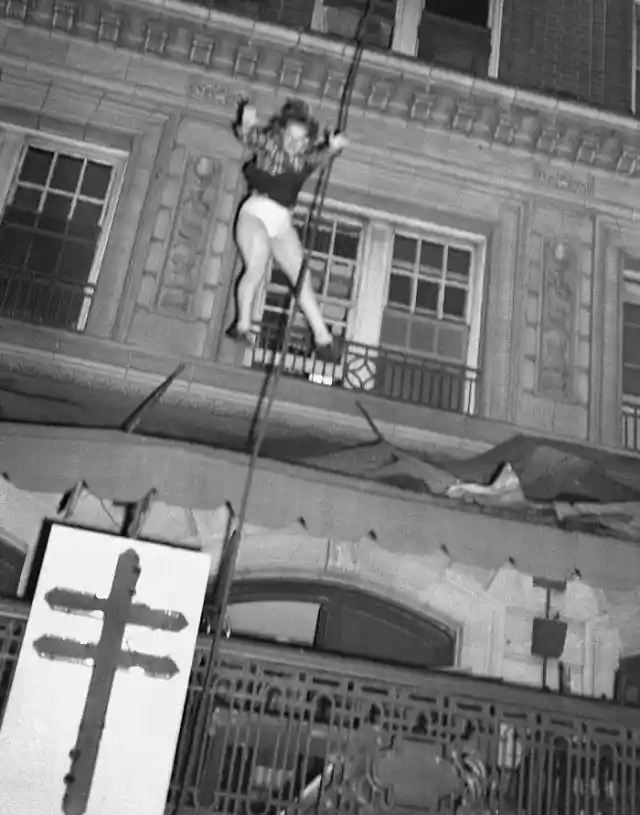
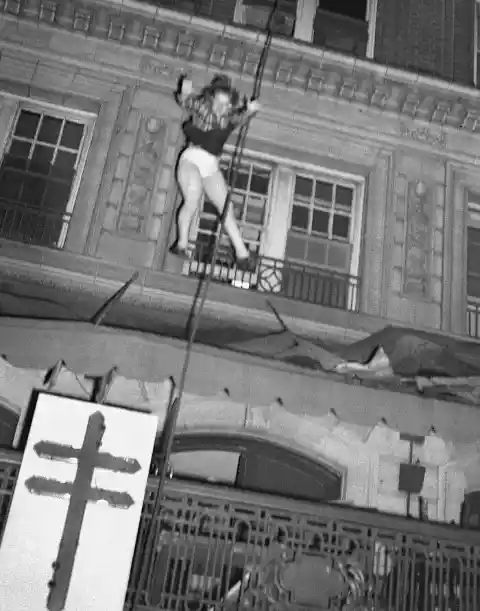
The woman was Daisy McCumber, a 41-year-old secretary. She miraculously survived the jump, but broke her legs, back, and pelvis. After years of surgery and losing one leg, she recovered.
Undocumented Immigrants, 2003
There are many undocumented immigrants in the United States, who have fled their countries in search of a better life. However, getting to their destination is extremely difficult.
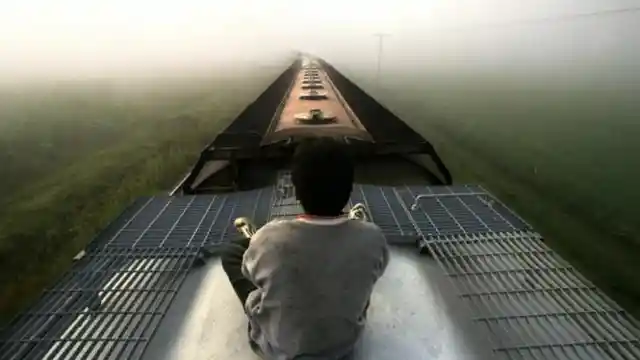
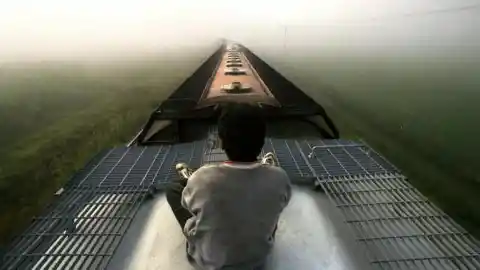
Many people put themselves in danger in order to cross the border. This young Honduran boy can be seen riding a freight through Mexico to get closer to the USA. His trip went on for 1,500 miles.
Shooting Of James Meredith, 1967
The March Against Fear took place in 1966. Many activists marched from Memphis, Tennessee, to Jackson, Mississippi, in order to encourage African Americans to register to vote and to challenge the racist culture of the time.
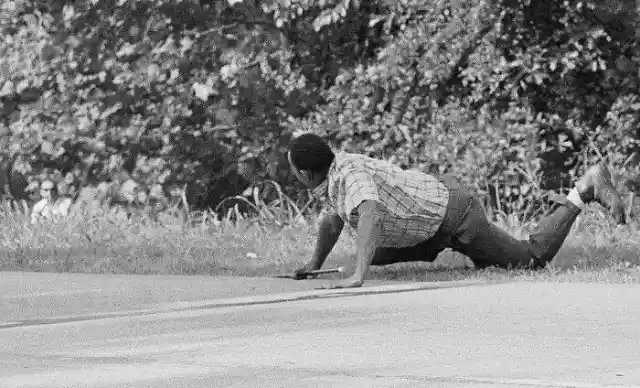
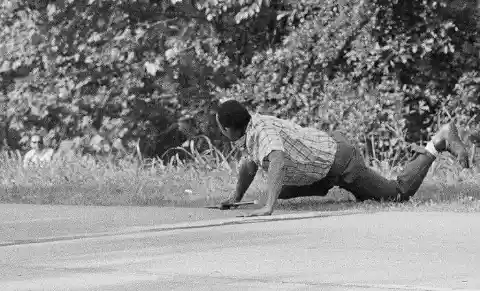
Activist James Meredith was shot by a white supremacist sniper that day, and the moment was captured in this photo. Thankfully, Meredith survived.
Female Circumcision Rite, 1996
Female circumcision is illegal in most countries, given that it is considered cruel and unnecessary. However, many countries in Africa still carry out this tradition.
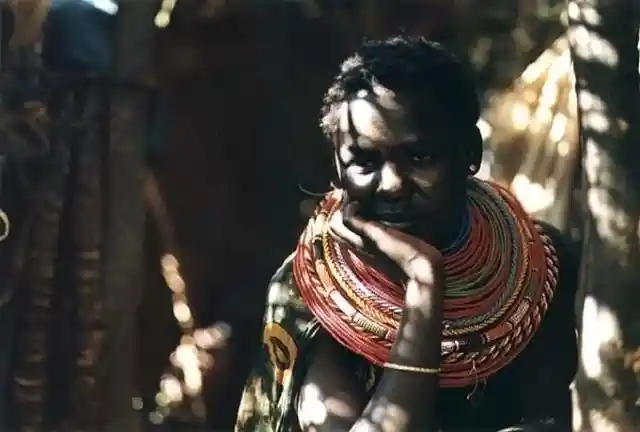
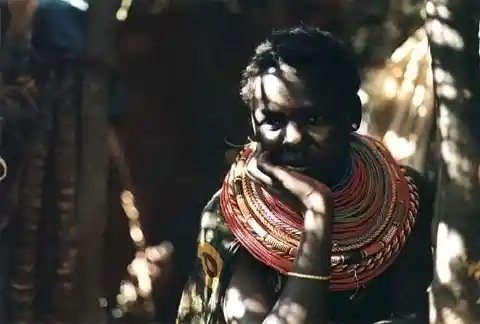
This photo shows a young girl in Kenya, who is about to undergo the painful ritual. Photographer Stephanie Welsh captured every moment of the rite, shedding light on this barbaric tradition.
Johnny Bright Incident, 1952
Photographers John Robinson and Don Ultang suspected that African American player Johnny Bright was being targeted during football games. To get to the bottom of it, they set up a camera that would focus on Bright during a game.
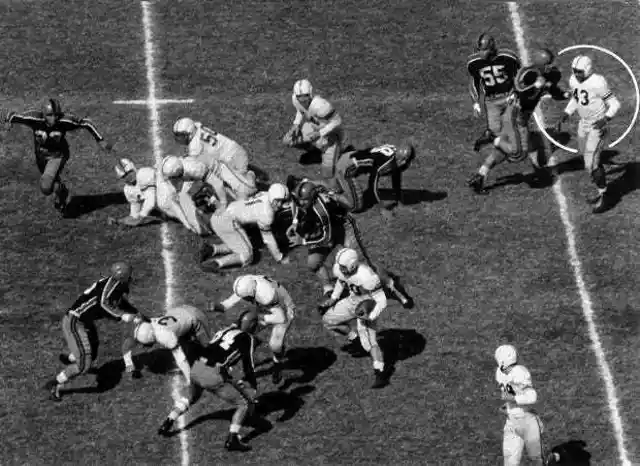
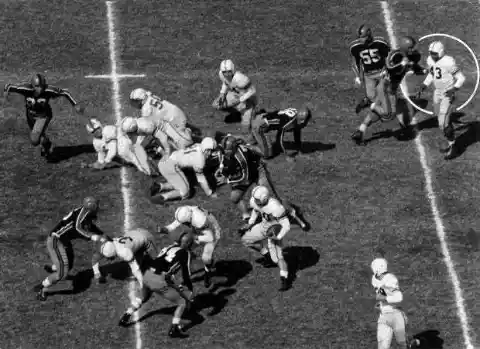
This way, they managed to prove that white players of the opposing team were constantly targeting him. Bright got knocked down three times and had his jaw broken during the game.
Stepping On The KGB, 1992
After the fall of the Soviet Union, people were no longer afraid to show their disagreement with the old regime. Many statues of former leaders were taken down.
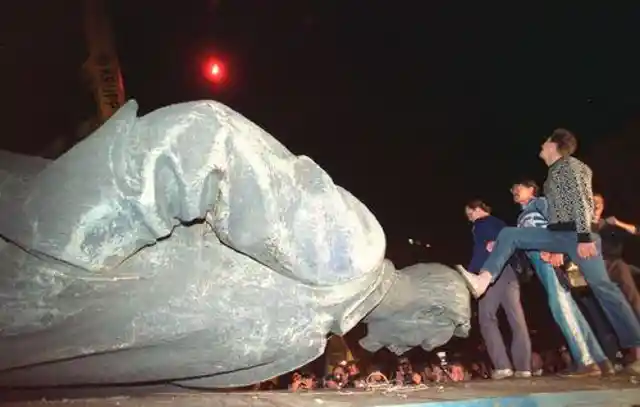
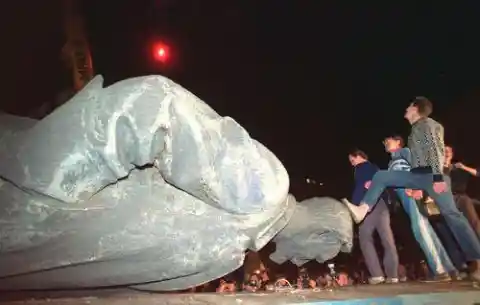
This photo shows people stepping on a statue of Felix Dzerzhinsky, the founder of the KGB, who was responsible for mass arrests and executions.
Campus Guns, 1970
Just by looking at this photograph, one might guess these people belonged to some sort of guerilla. However, that would be far from the truth. These men are, in fact, students from Cornell University.
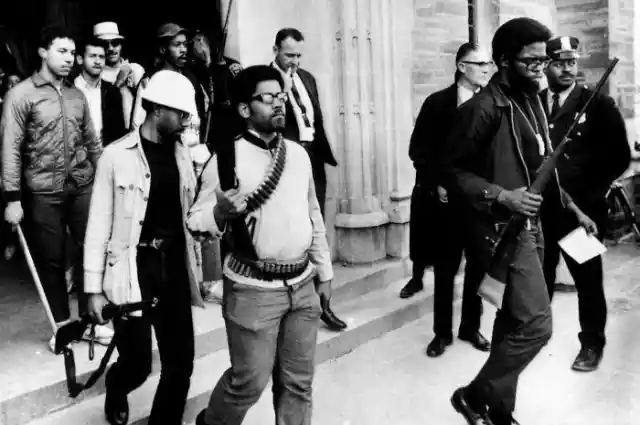
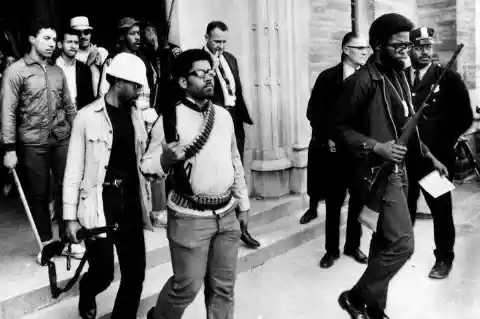
In 1970, students revolted against the status quo and took over the school for 26 hours. This was not peaceful, however, as they were heavily armed.
Bill Clinton, 1993
Before a huge scandal tarnished his reputation forever, Bill Clinton was regarded as the coolest president America ever had.
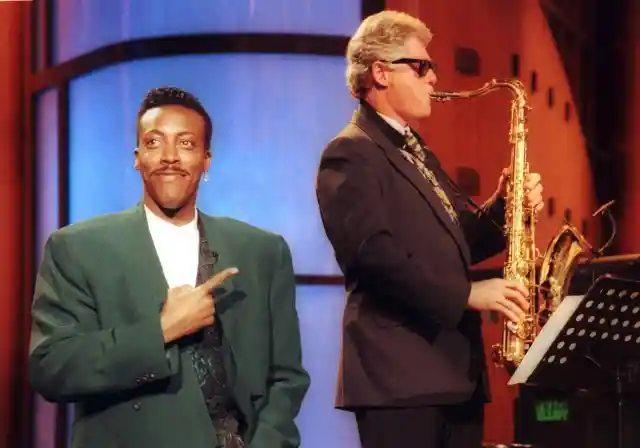
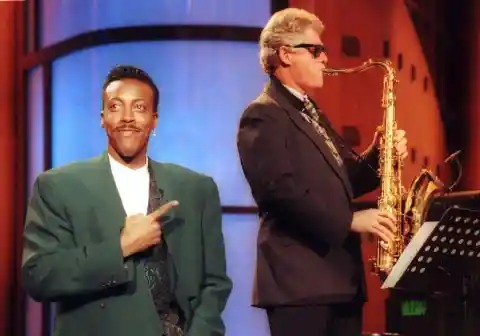
One of the things that made him cool was how skilled he was at playing the sax. This picture of Clinton playing on The Arsenio Hall Show won a Pulitzer prize.
Syrian Rebel Soldiers, 2013
This incredible picture, taken by photographer Javier Manzano, shows two Syrian rebel soldiers guarding their position. Light is shining through the many bullet holes that decorate the metal wall next to them.
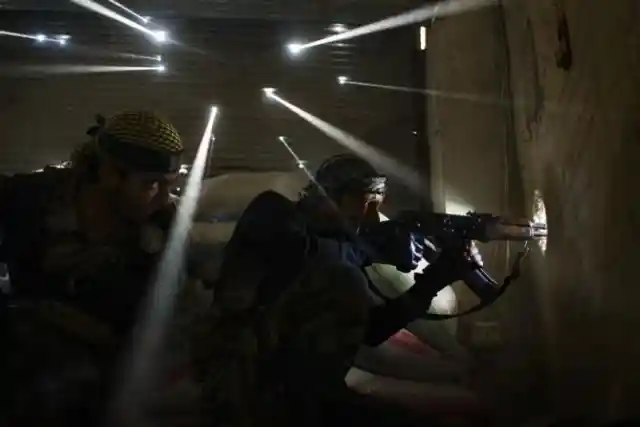
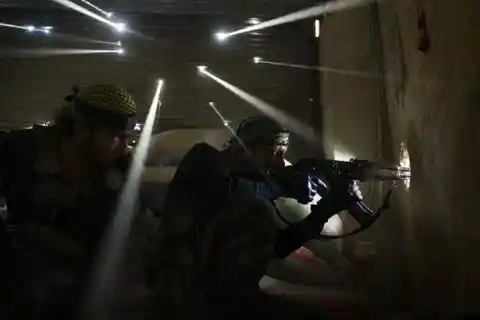
They were hiding in the Karmel Jabl neighborhood of Aleppo, a strategically important area due to its proximity to the main road that connected several battlegrounds in the city.
Reagan Is Shot, 1982
There have been many assassination attempts against presidents over the years. One of them was the attempt against Ronald Reagan in 1981.
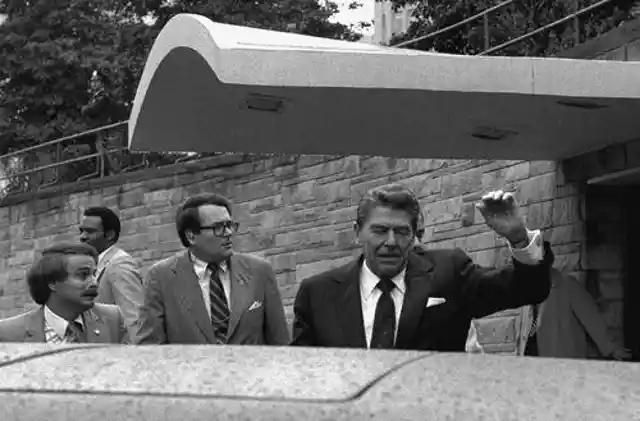
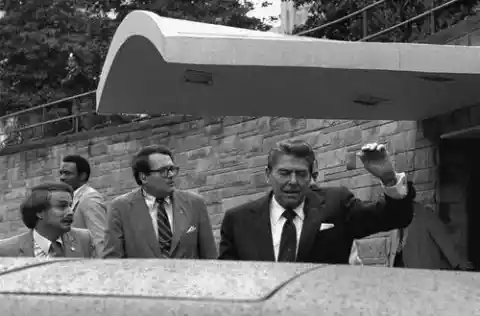
The president was shot on his left side by John Hinckley Jr., a deranged Jodie Fosterfan who thought he'd gain the actress' favor by killing the president. Reagan survived.
Barack Obama, 2009
Photographer Damon Winter followed Barack Obama's presidential campaign closely. He managed to photograph the president every step of the way.
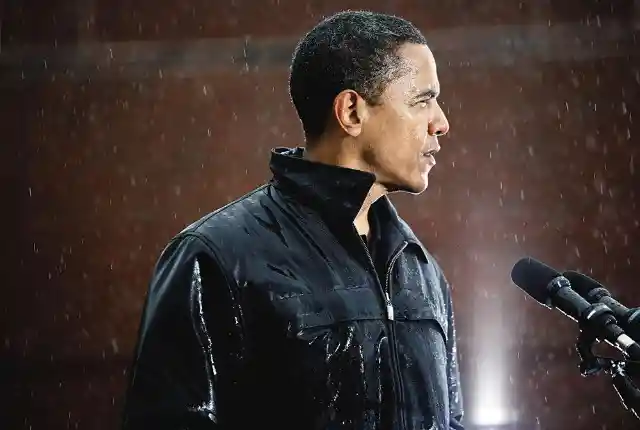
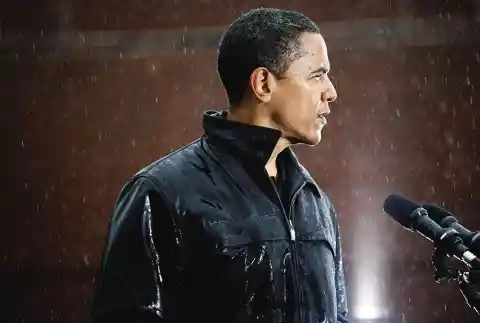
This photo shows president Obama, who was then a senator, giving a speech during a storm. This photo became inspirational for many of his supporters.
Teenager Rescued By Firefighter, 1997
This looks like a scene taken straight out of an action movie. Sadly, it is very much real. This photo shows a firefighter rescuing a girl from raging floodwaters.

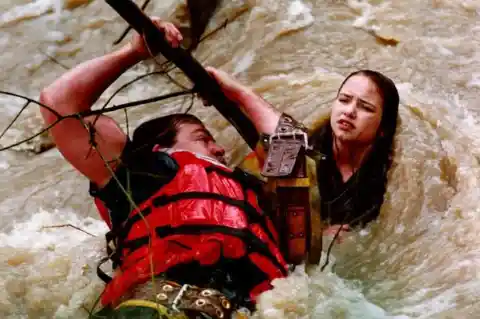
You can see the fear in the girl's expression, as she is not sure whether she is going to live or not. Luckily, she survived.
Boston Marathon Bombing Survivor, 2014
The Boston Marathon Bombing took place on April 15, 2013. Two domestic terrorists planted homemade pressure cooker bombs, killing 3 people and injuring hundreds. 17 people lost limbs.

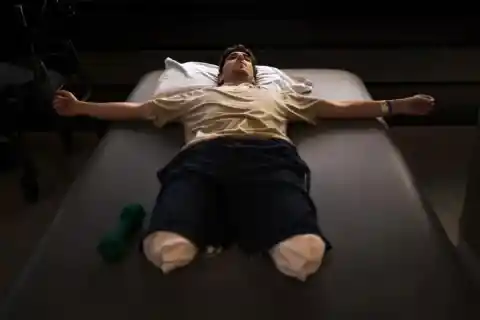
Jeff Bauman is one of the people who lost limbs that day. This photograph shows the painful journey to recovery and to rebuilding his life. Here, he is doing rehabilitation.
Terror Attack On The World Trade Center, 2002
Sadly, we all know what went down on that awful September 11, 2001. People all over the world were shocked to hear about this heinous attack that killed almost 3,000 people.
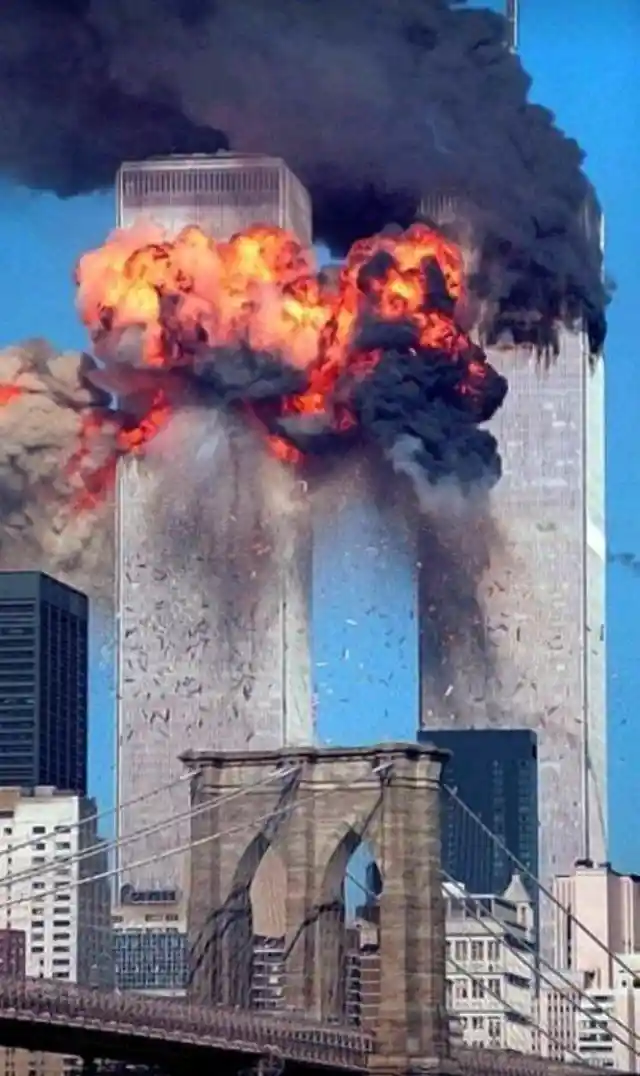
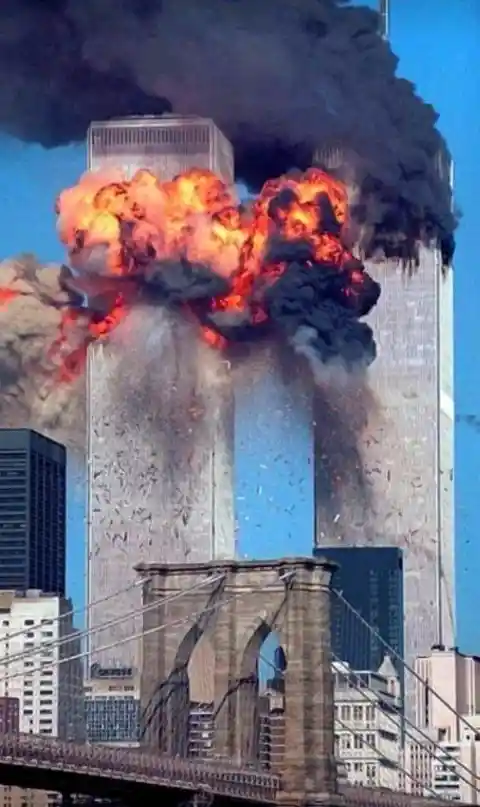
This award-winning photograph was taken moments after the second hijacked plane hit the South Tower of the World Trade Center.